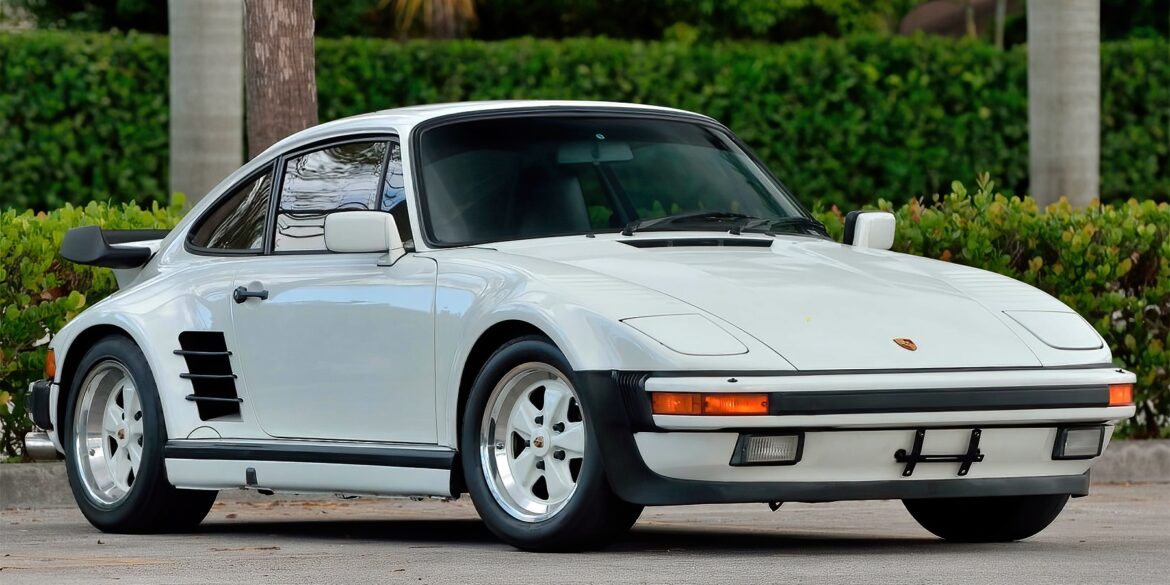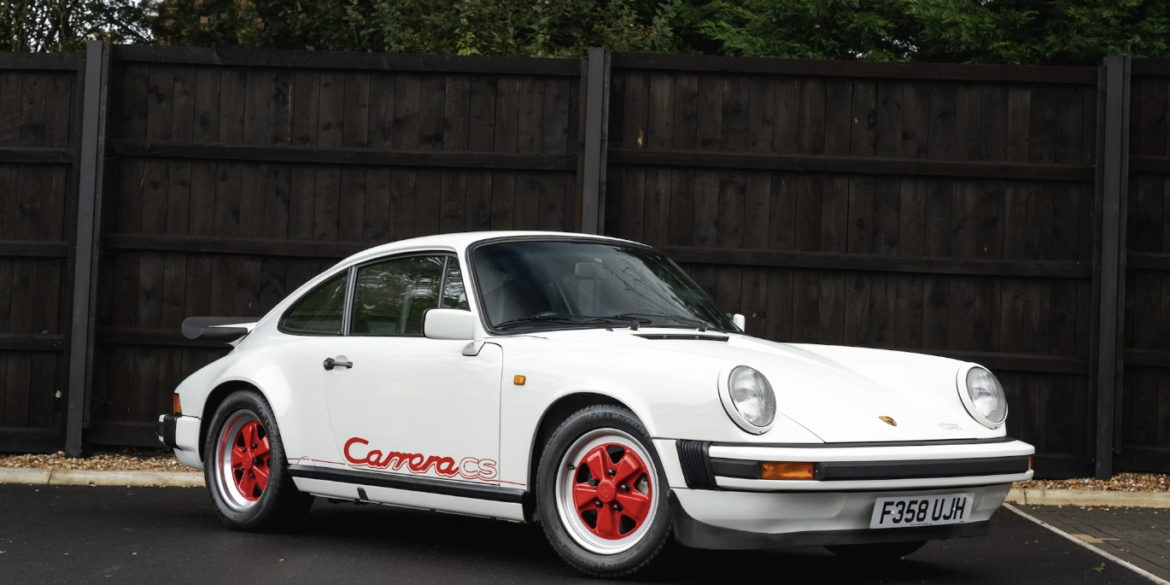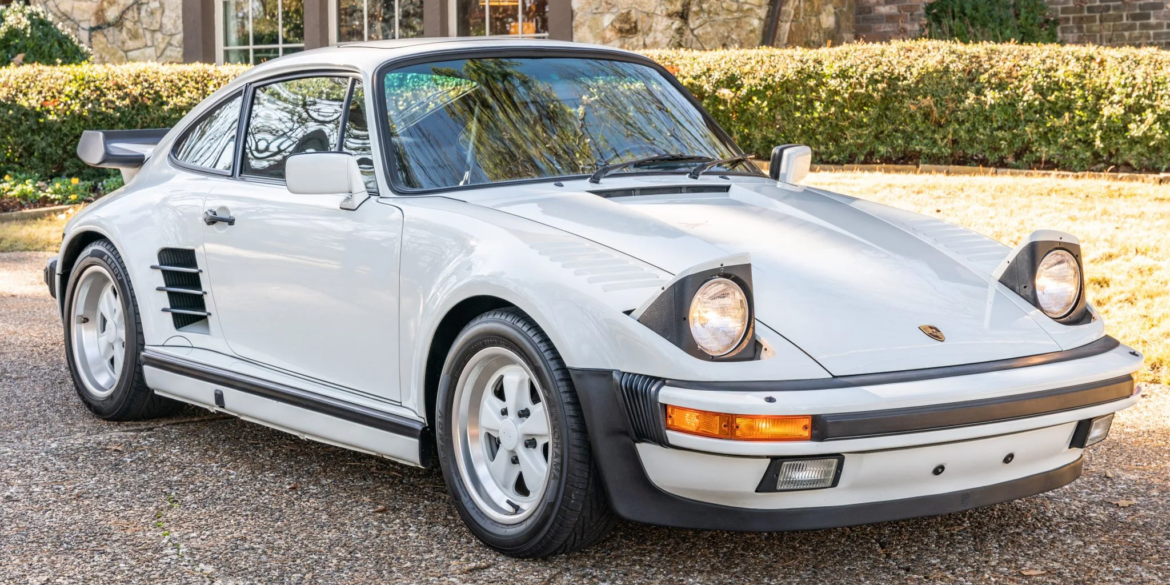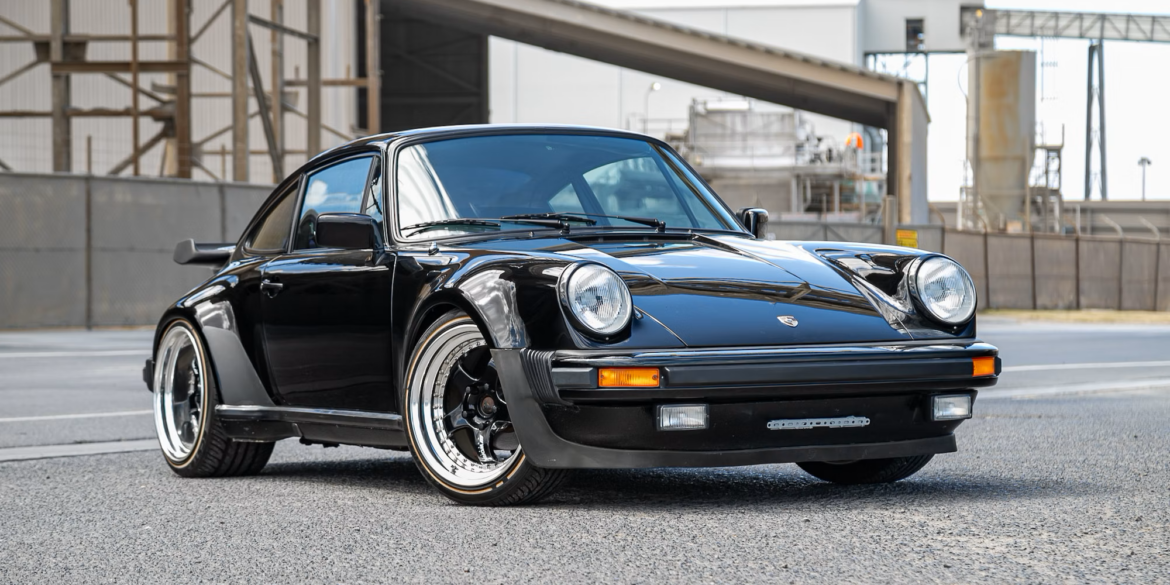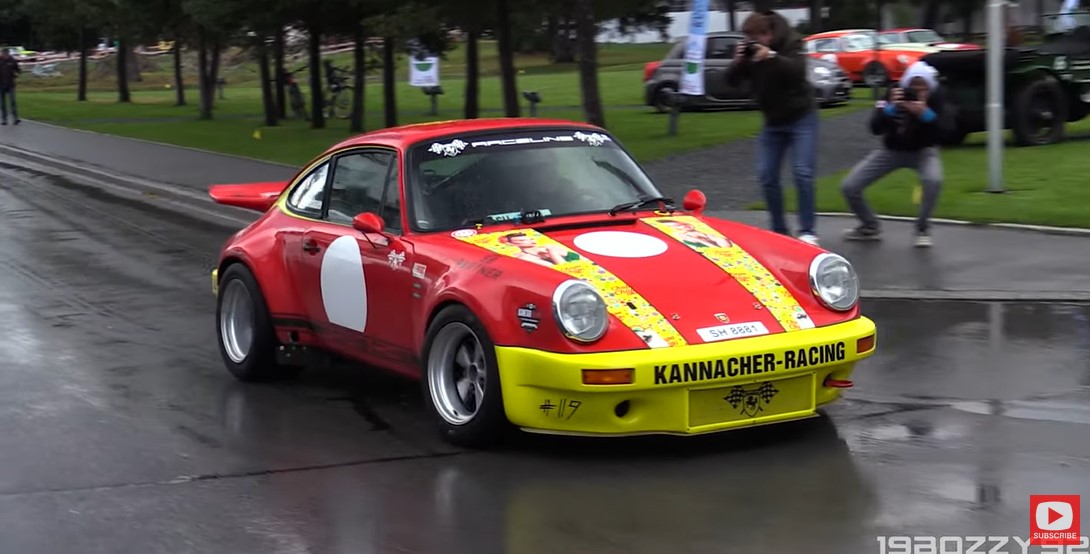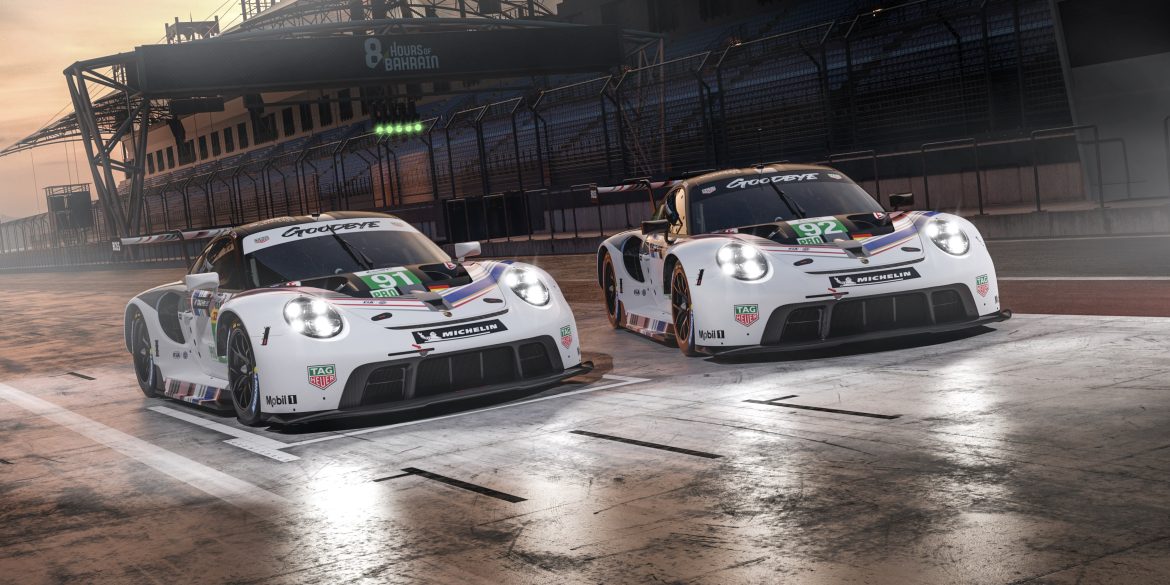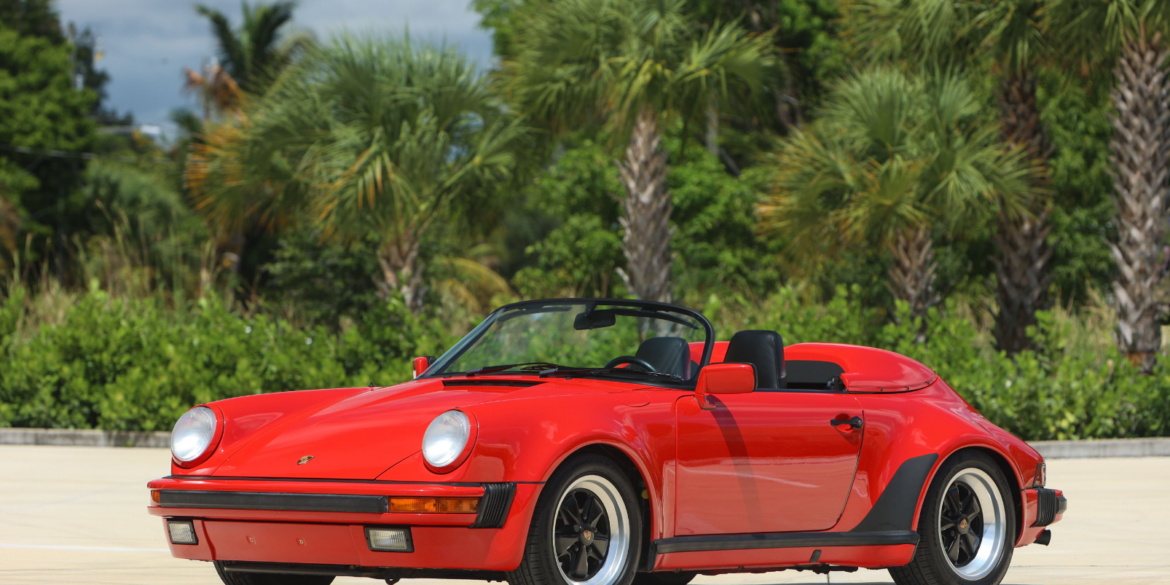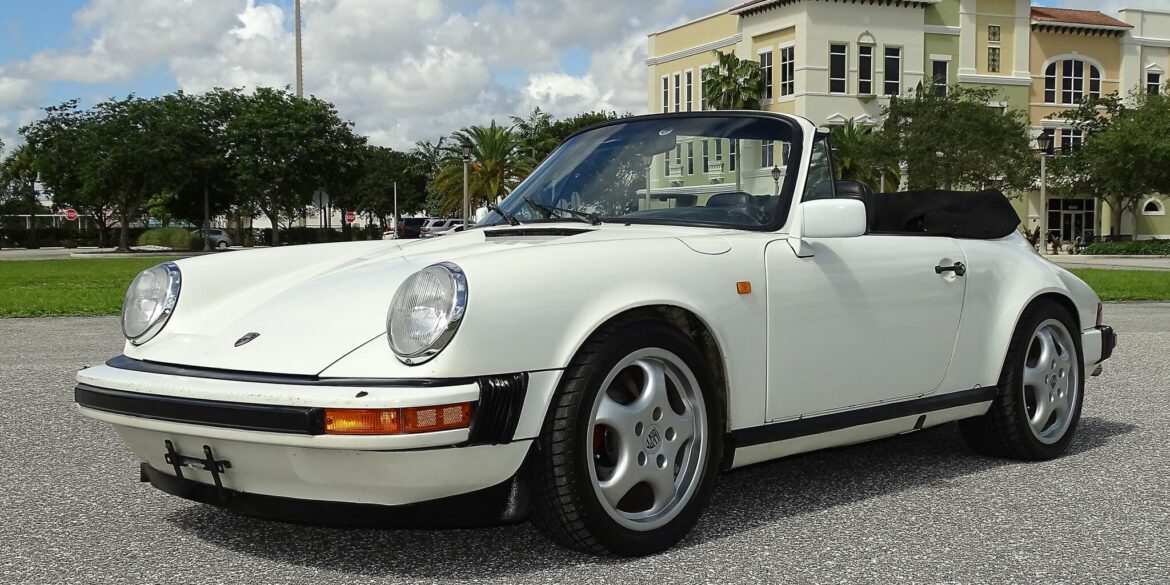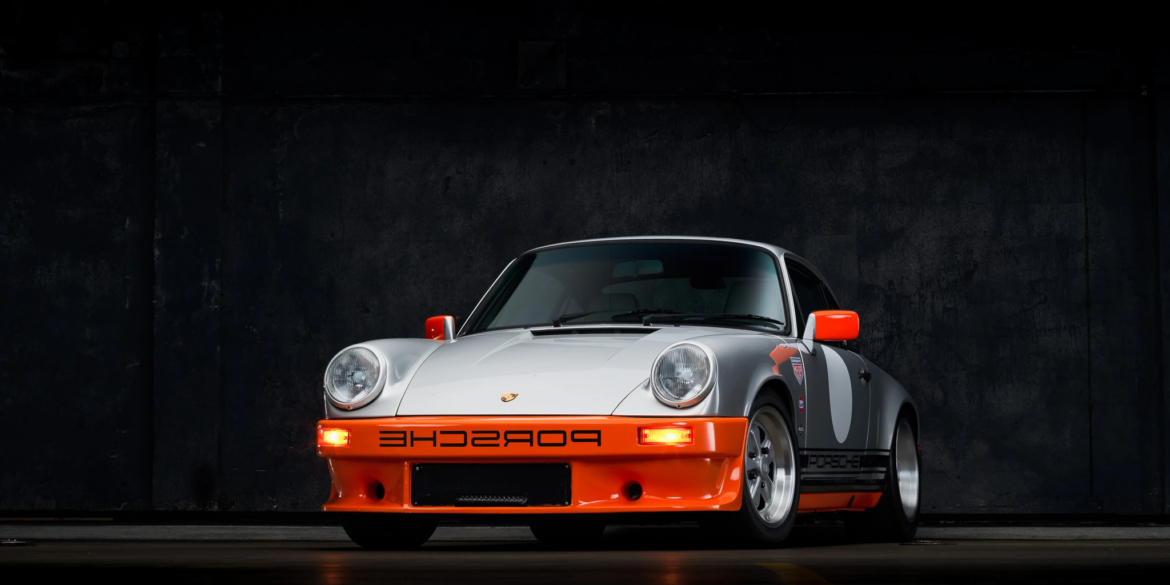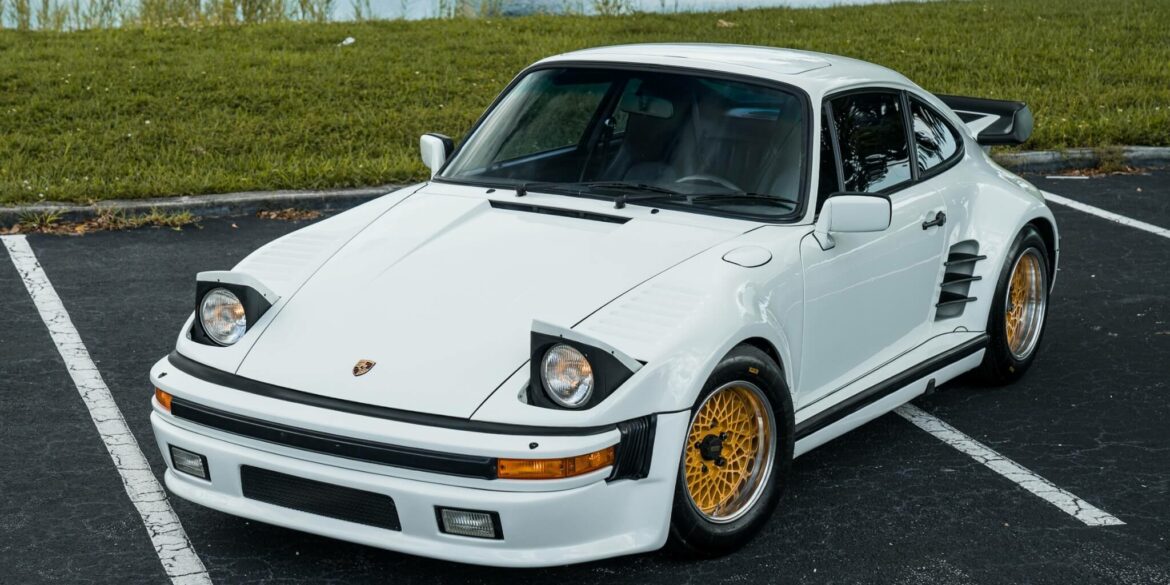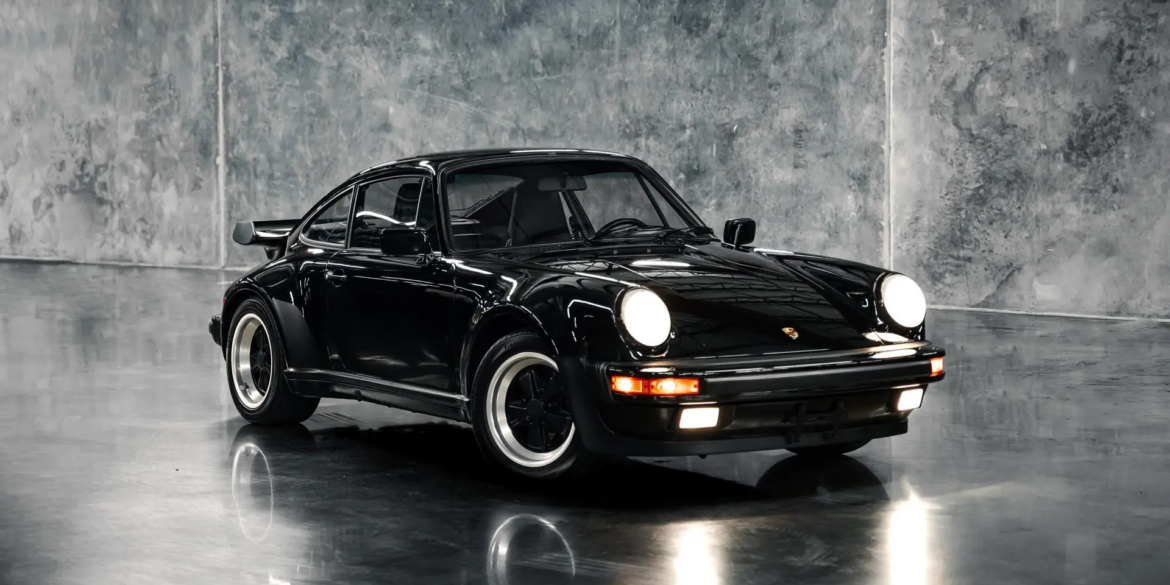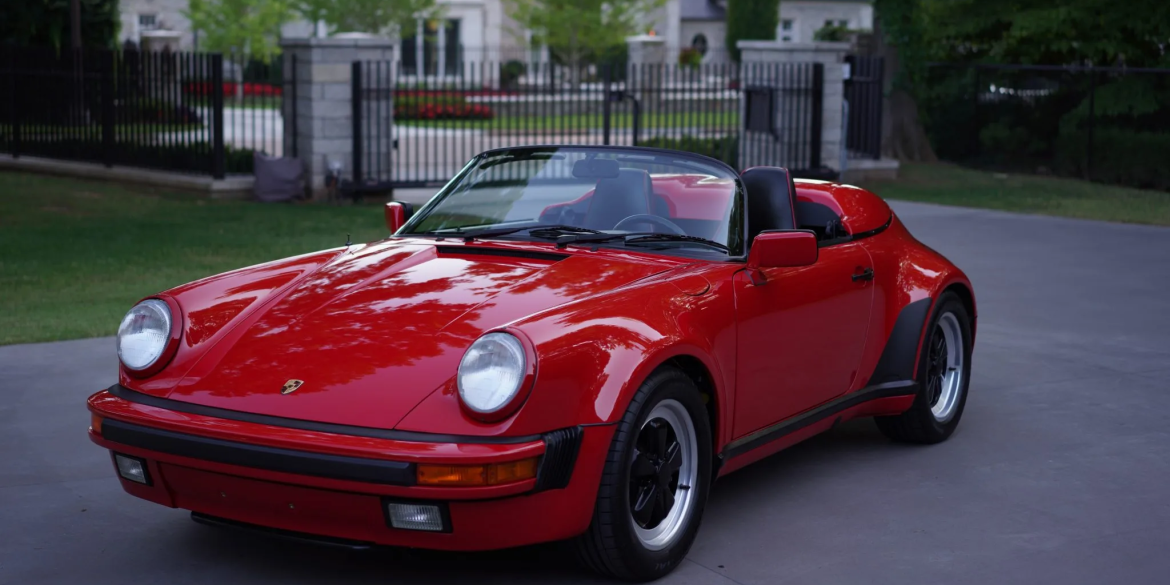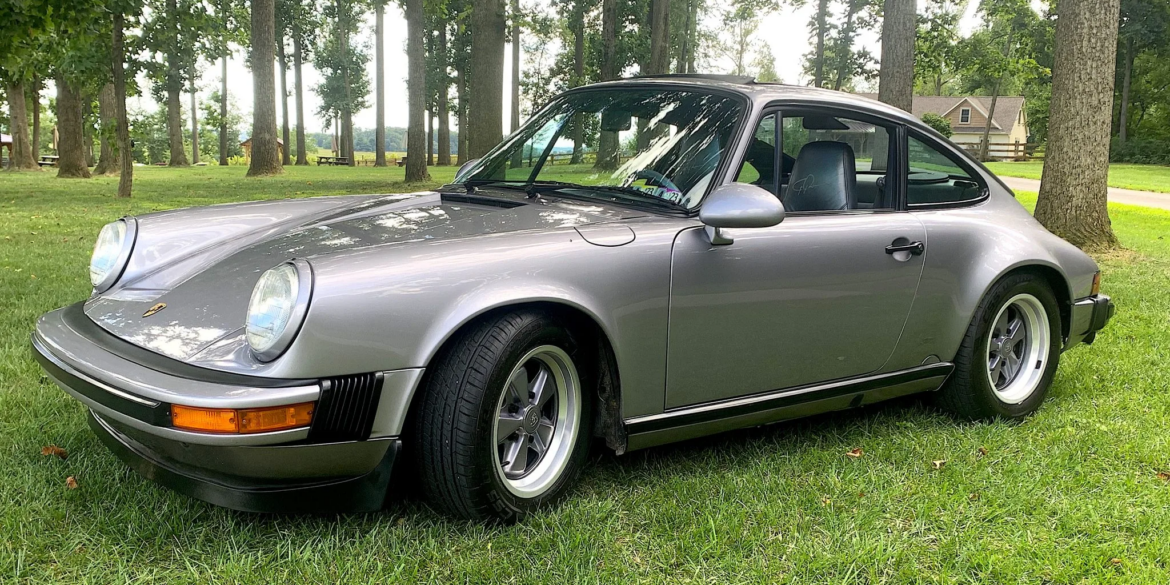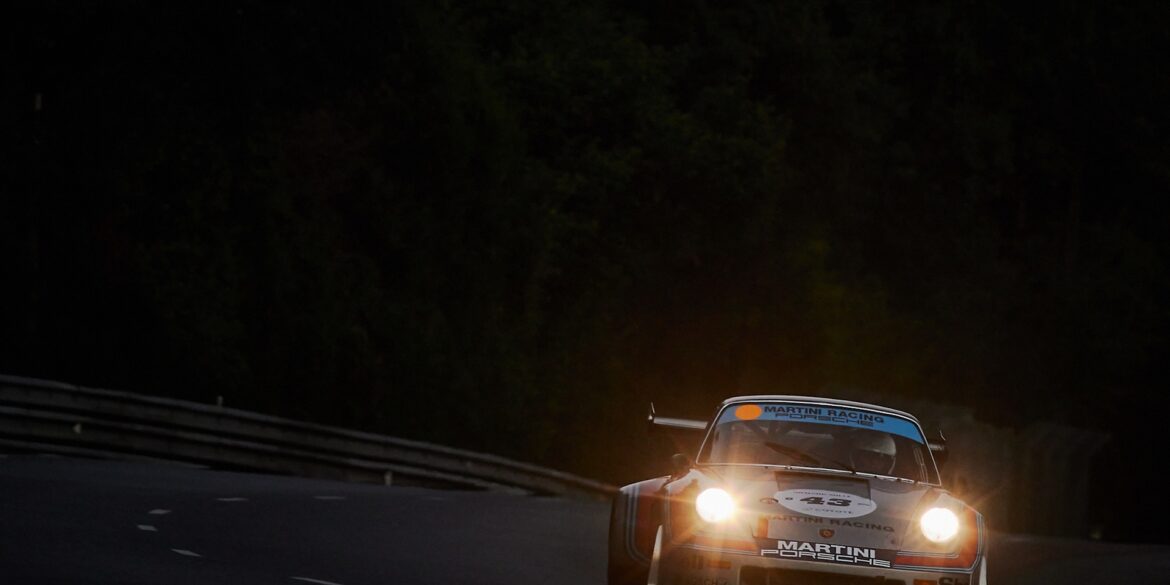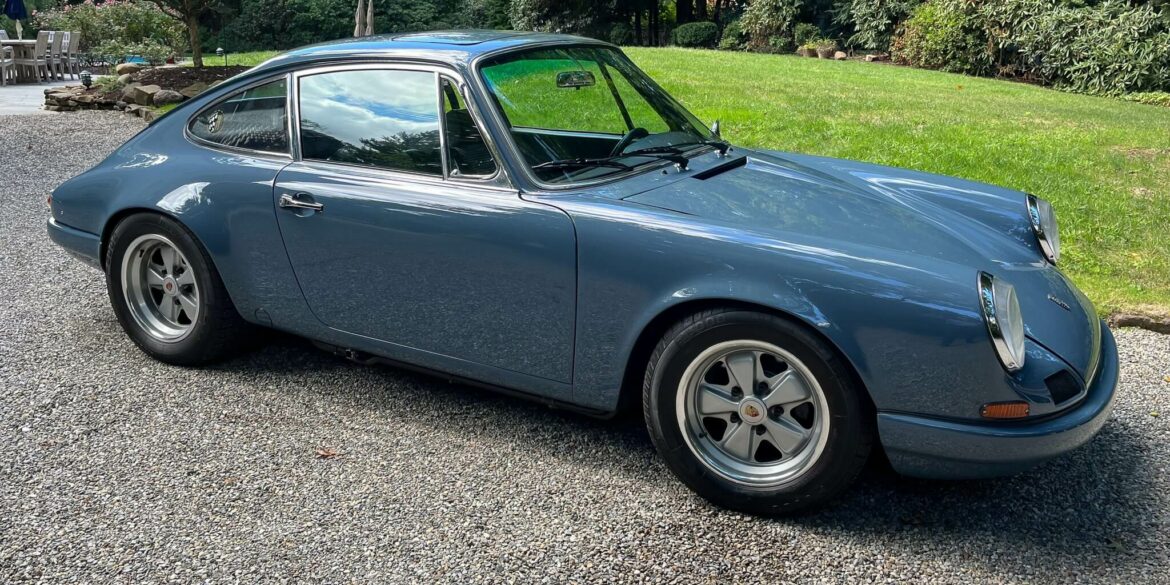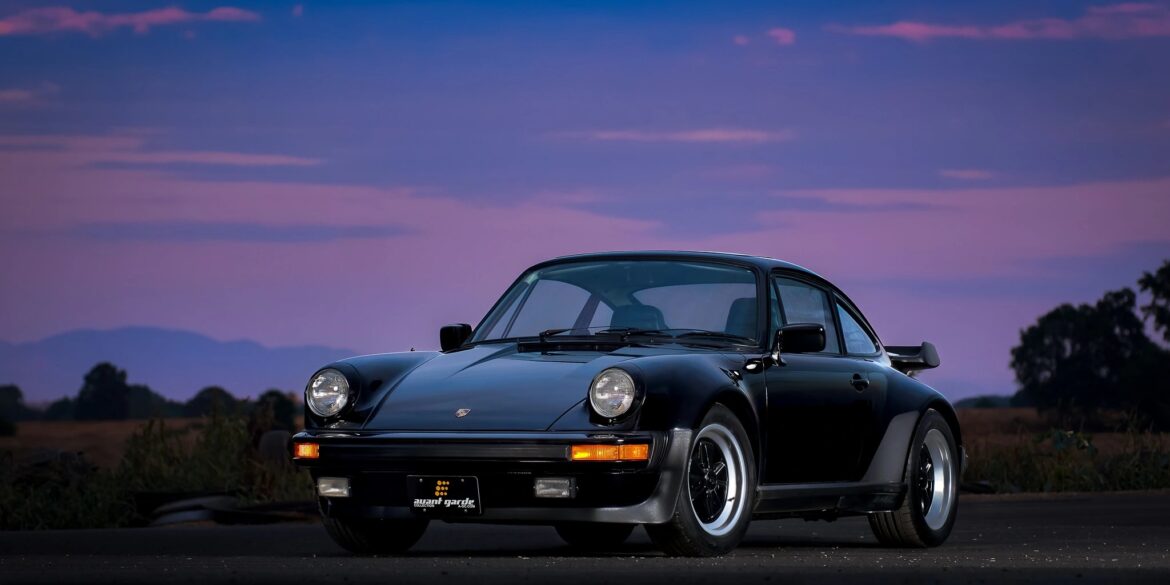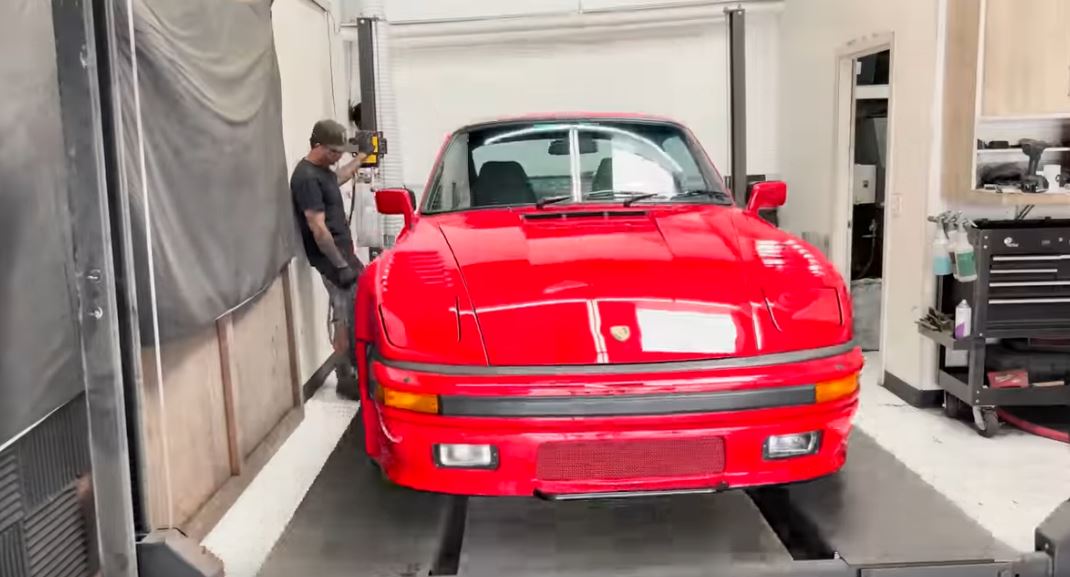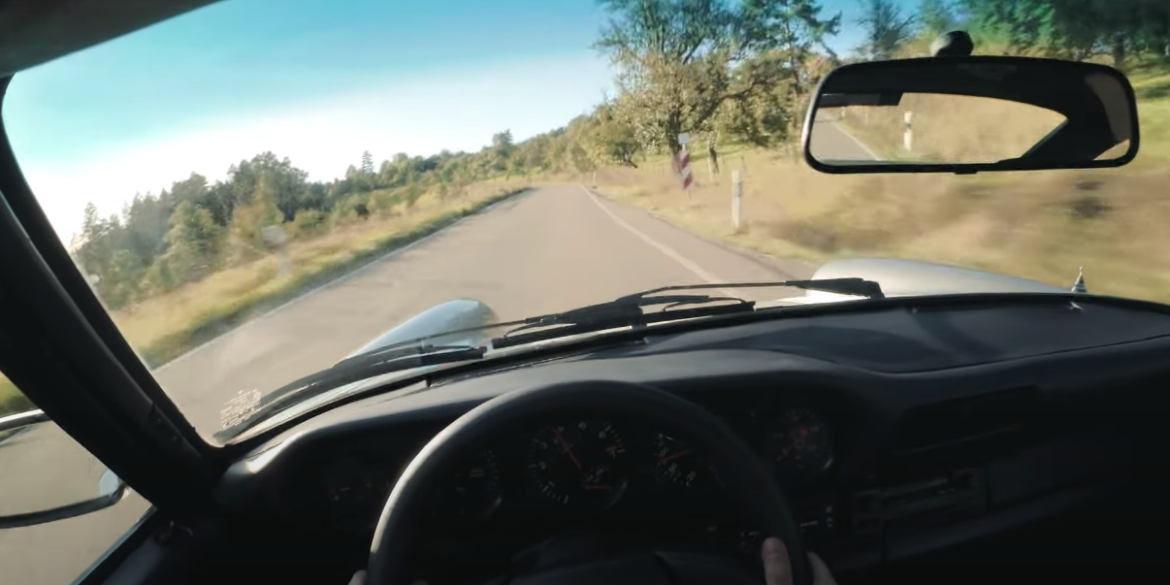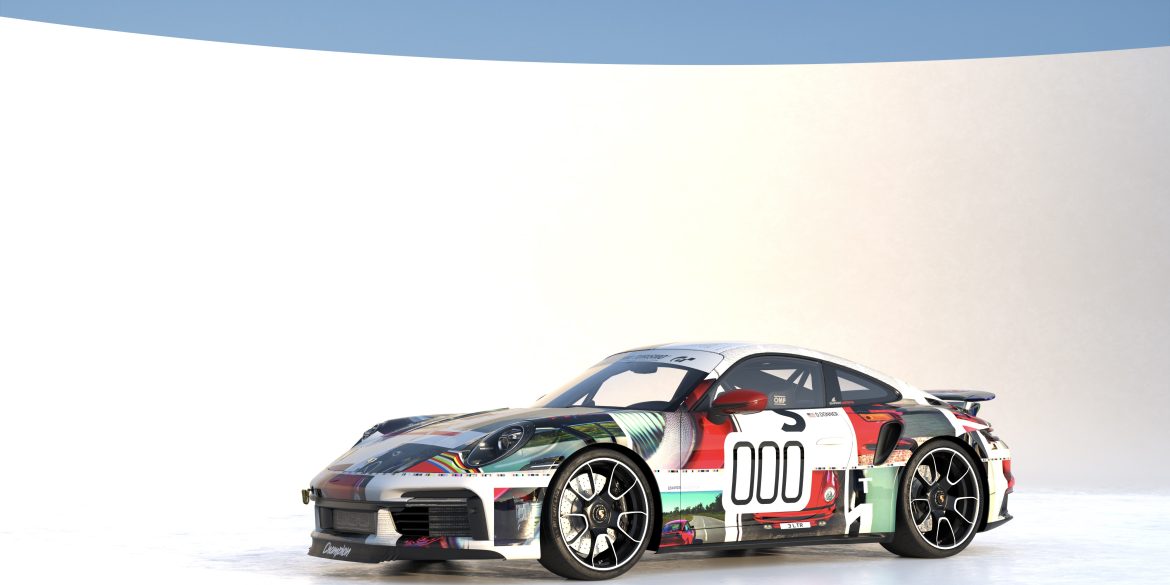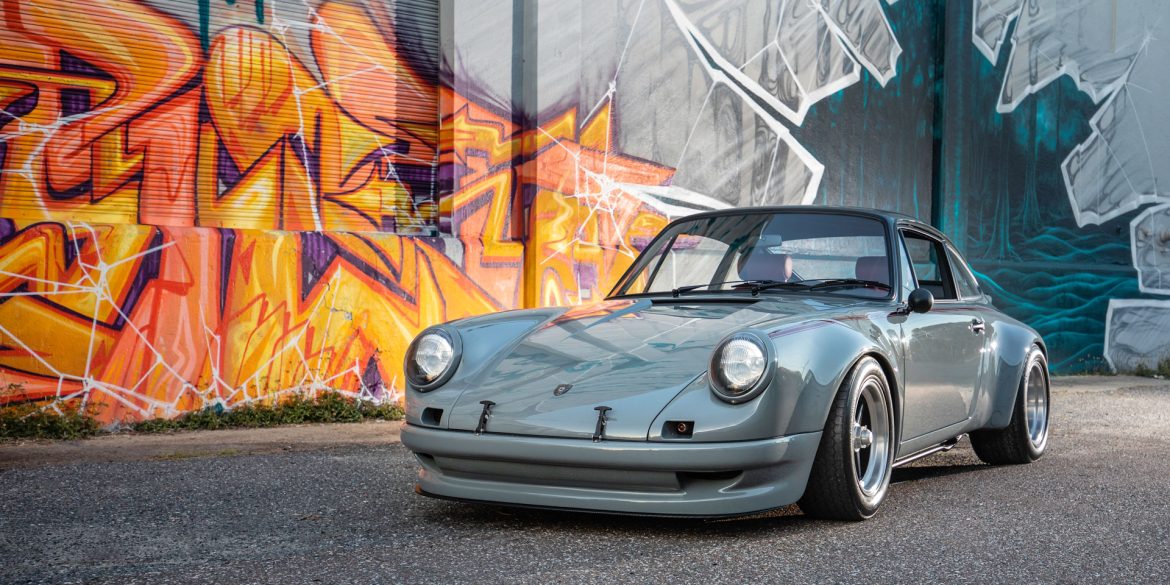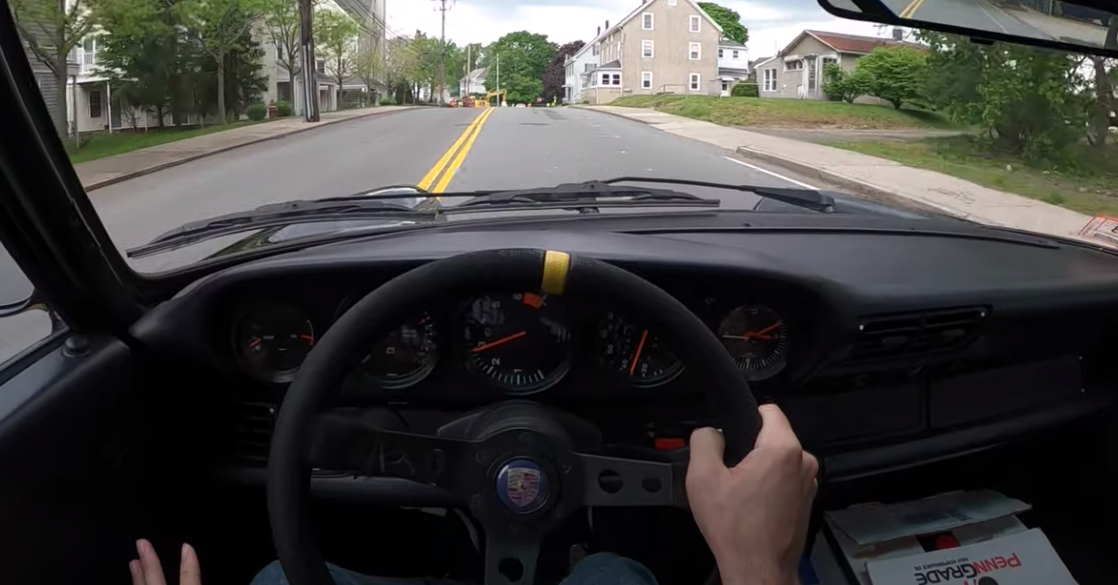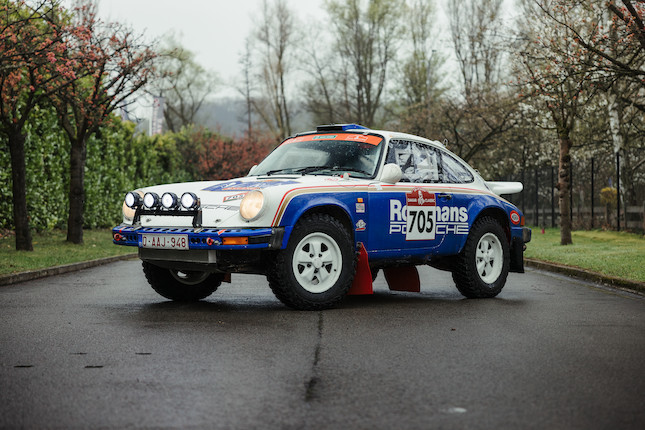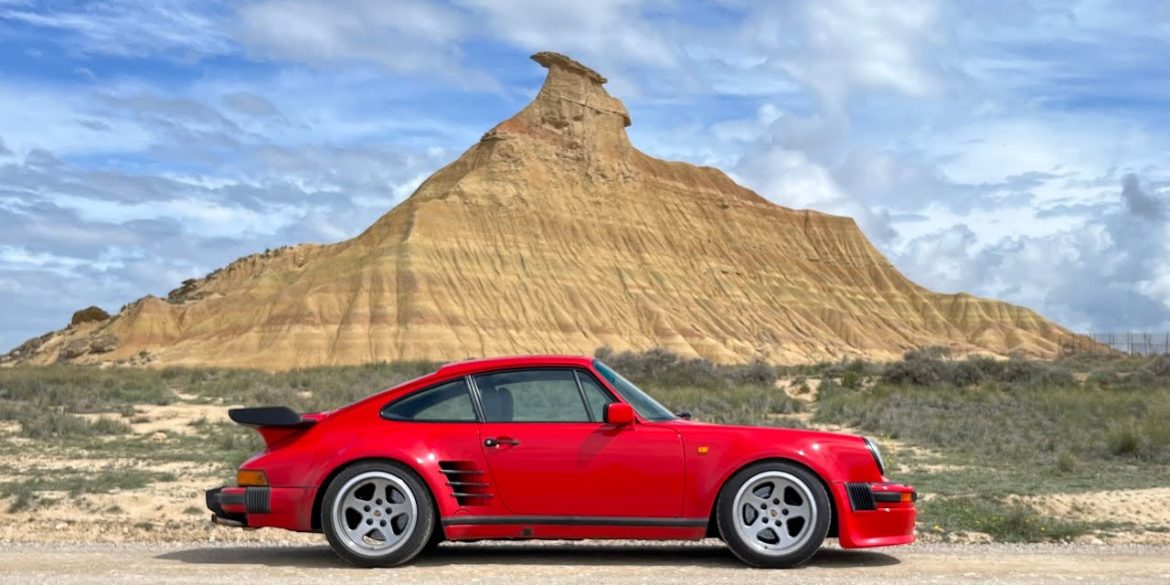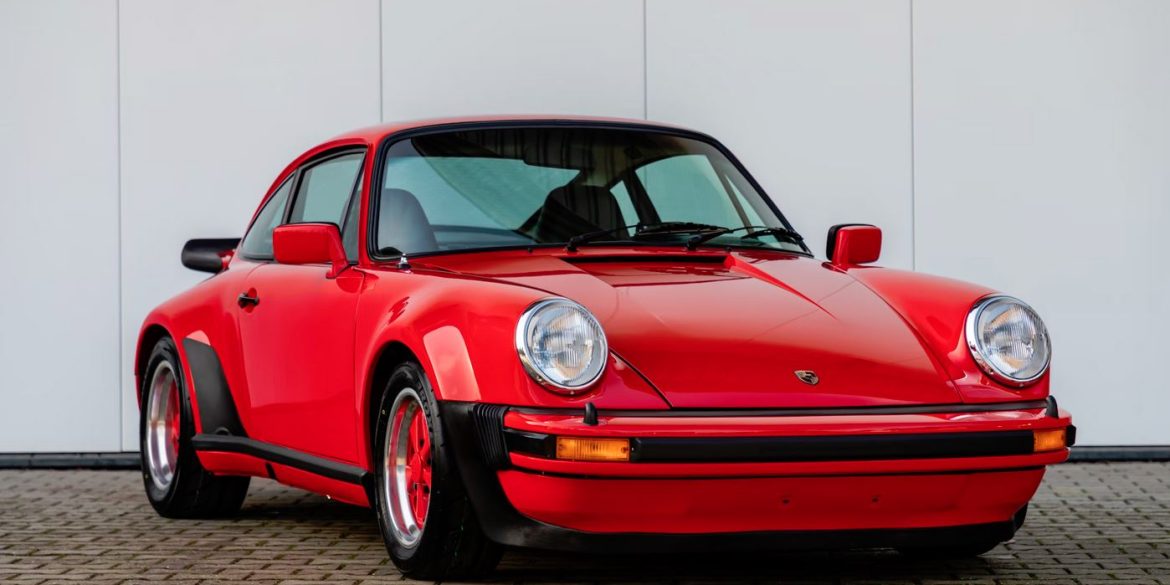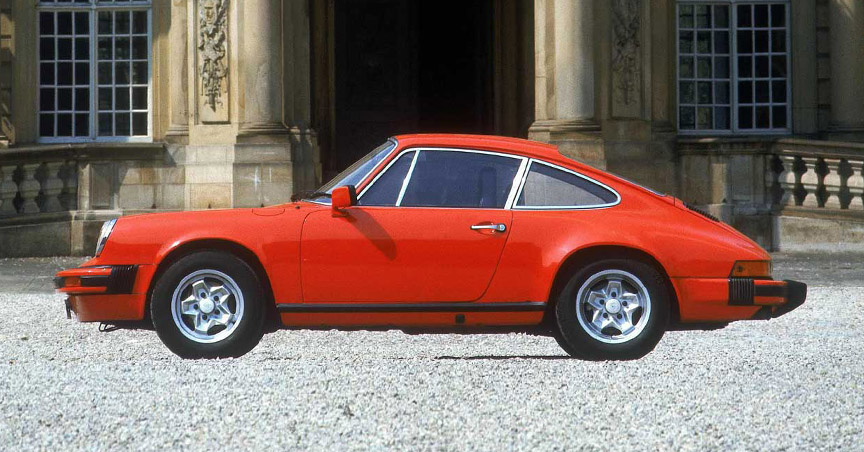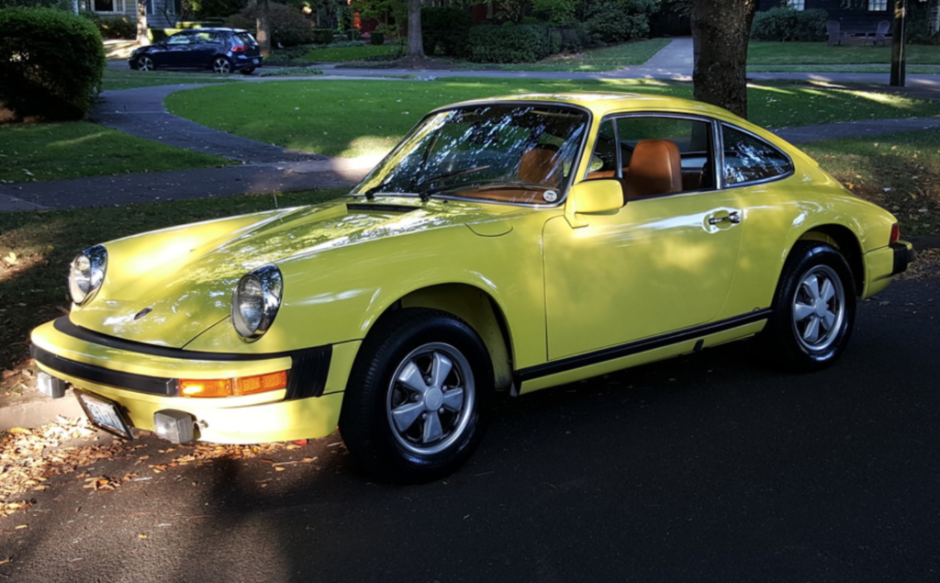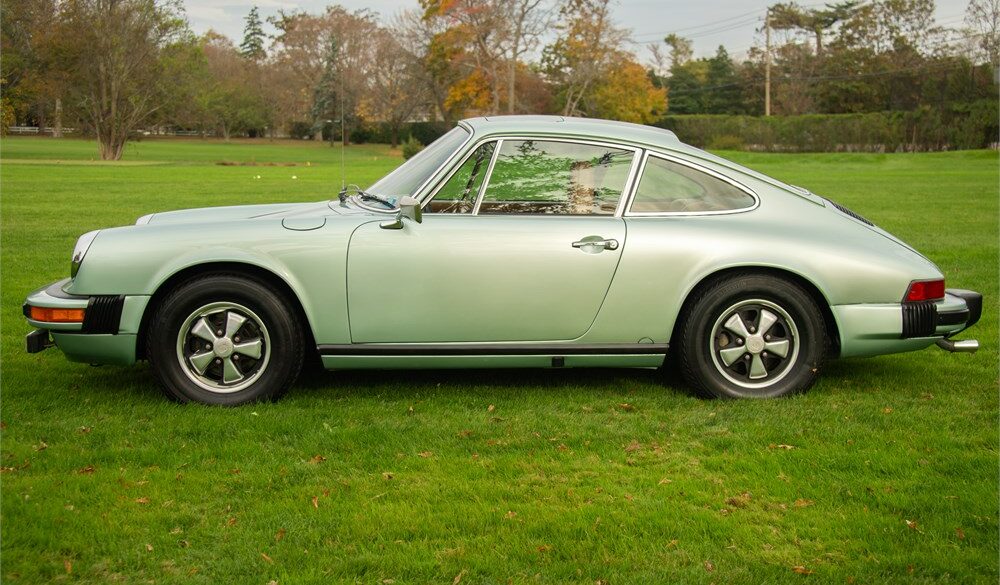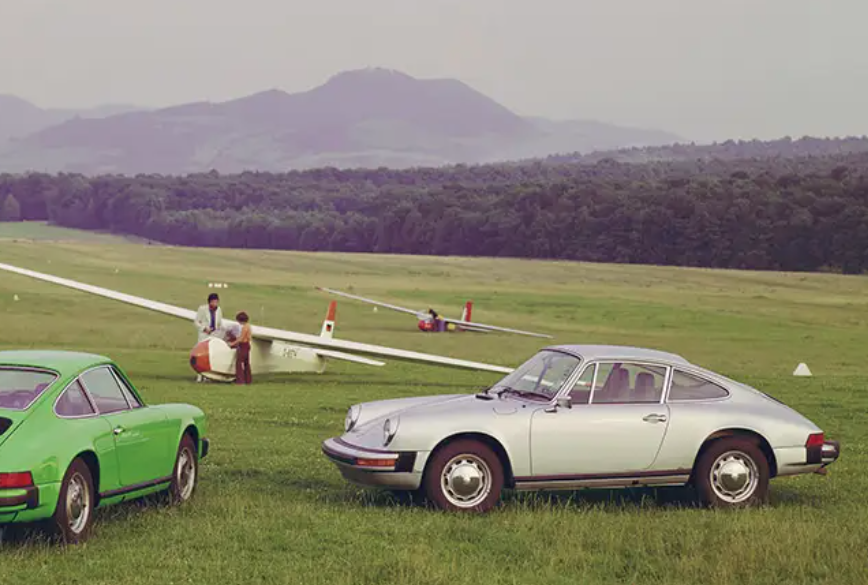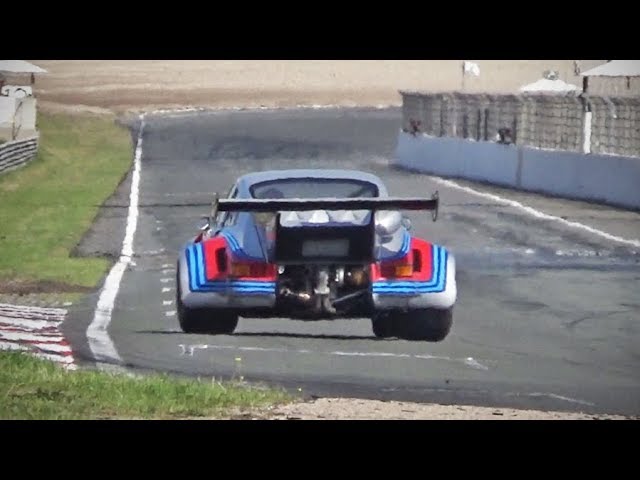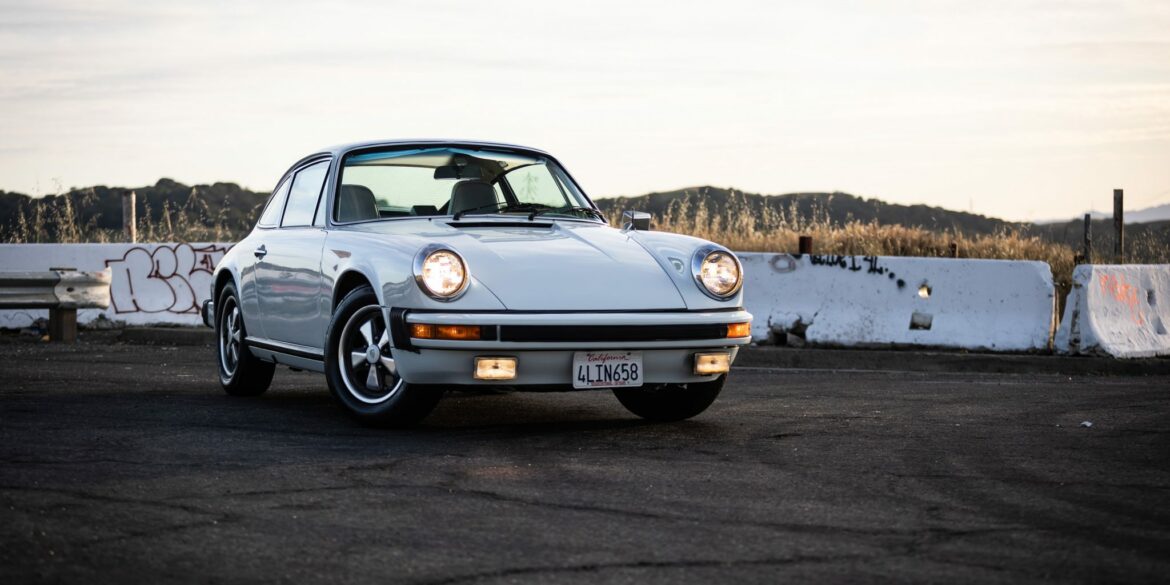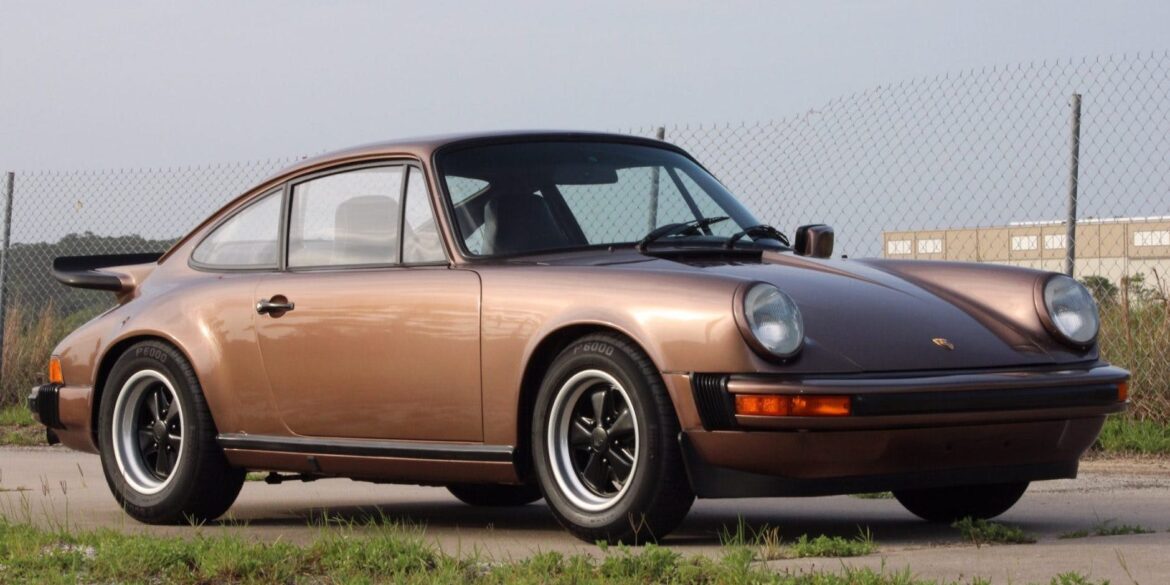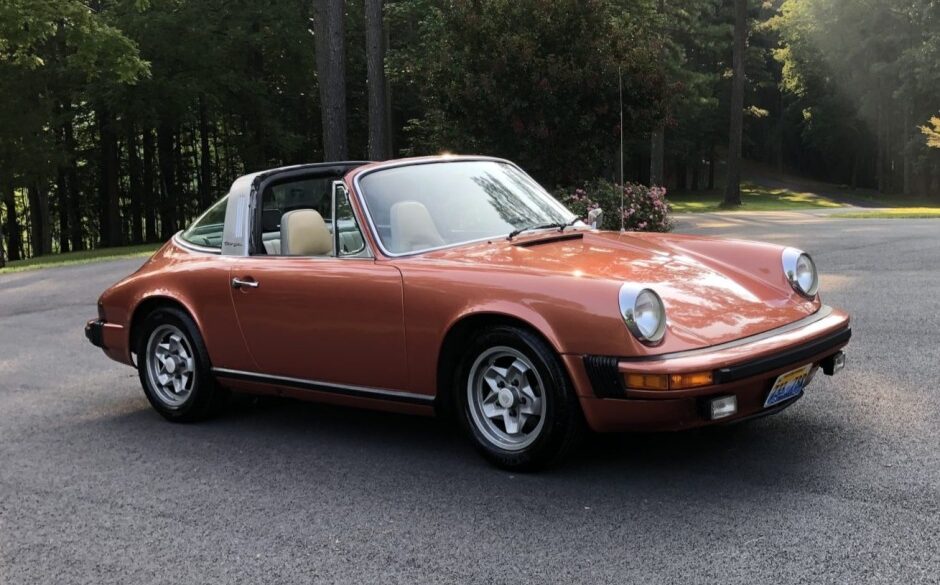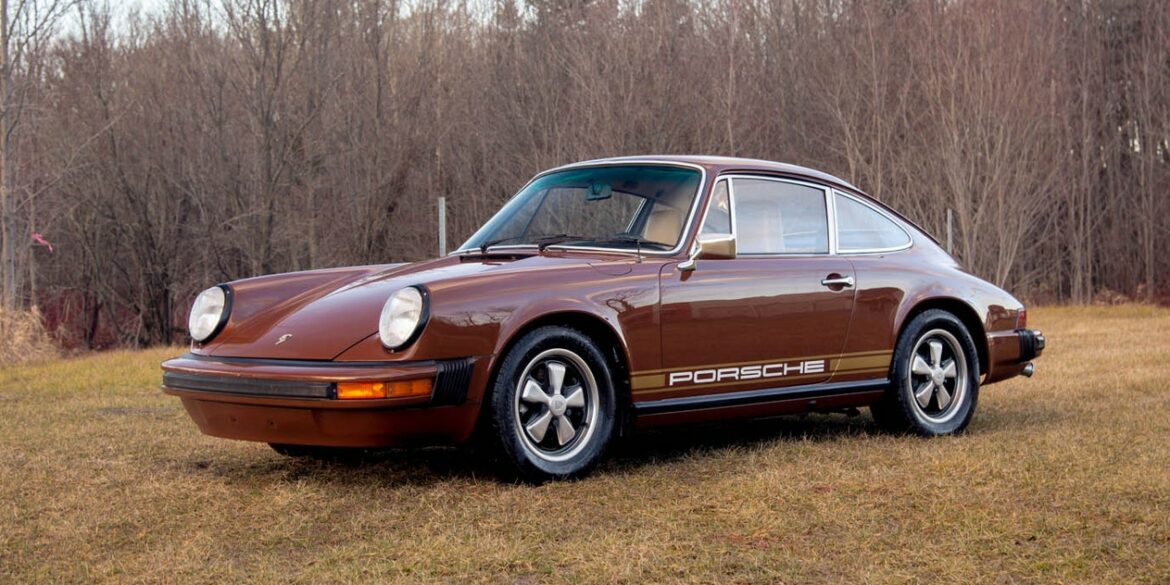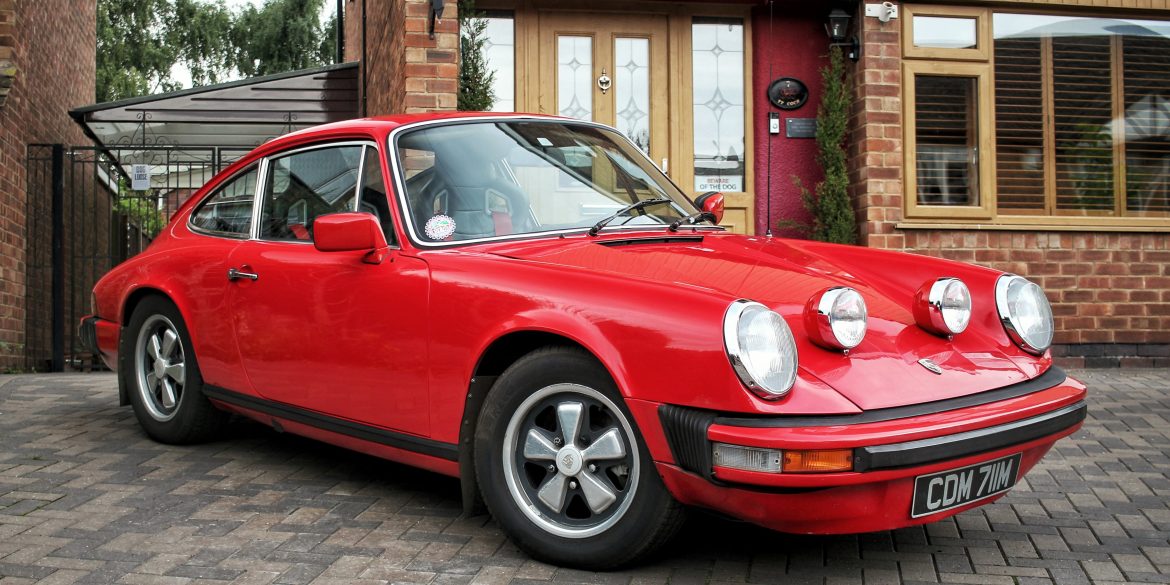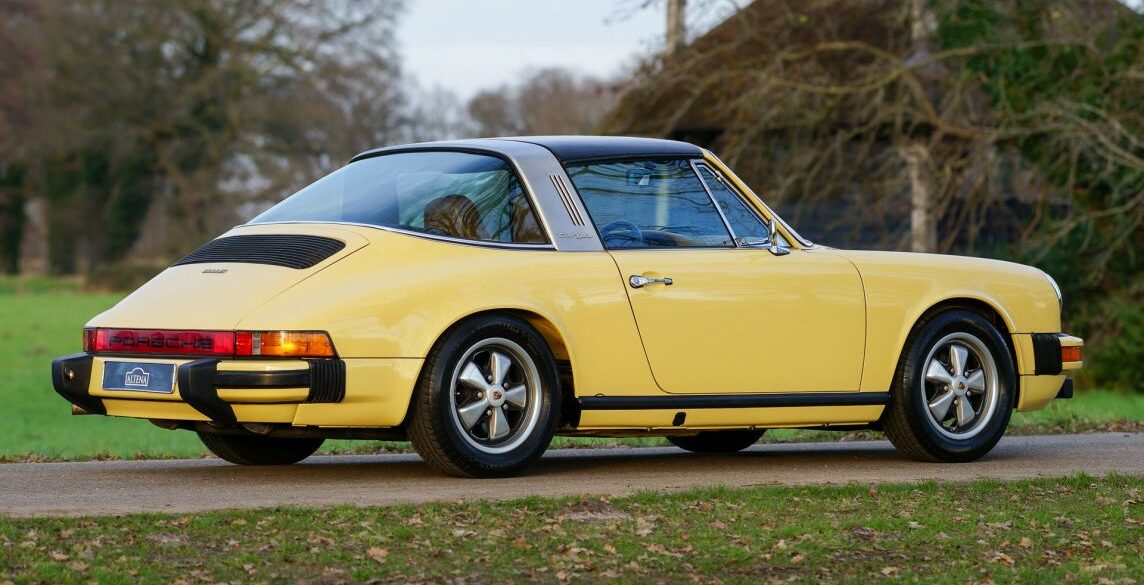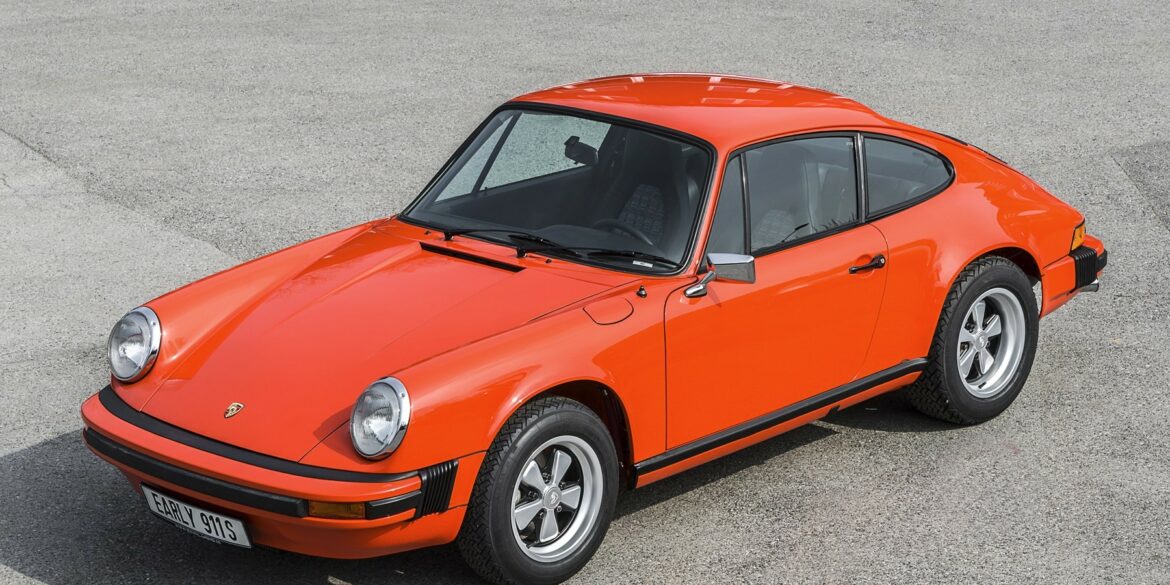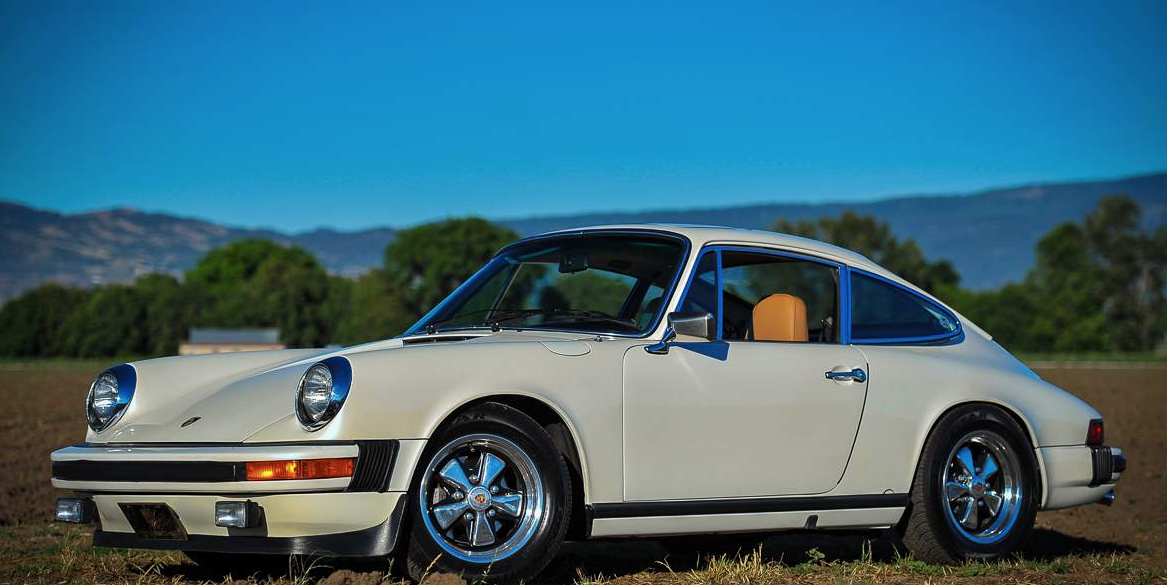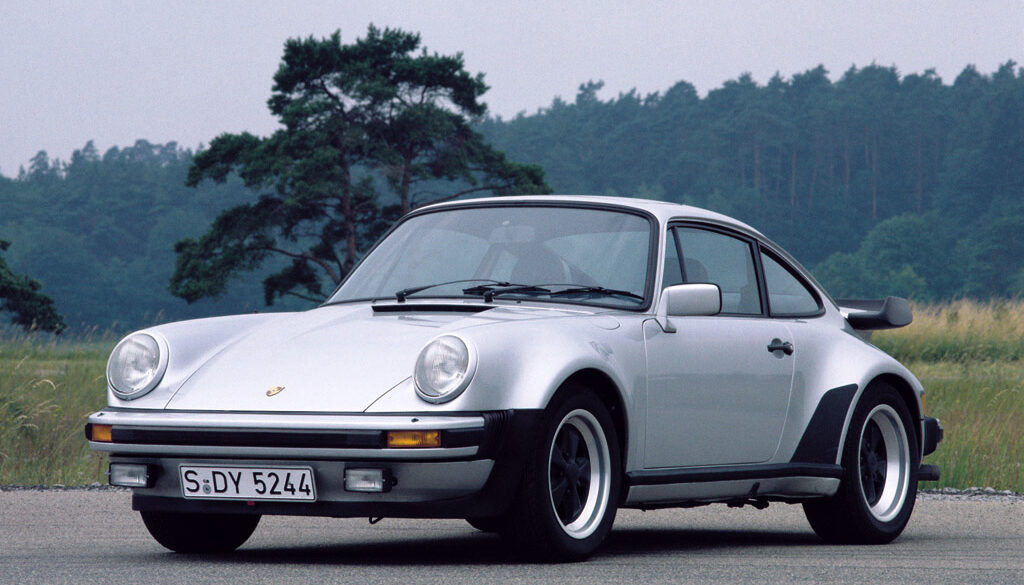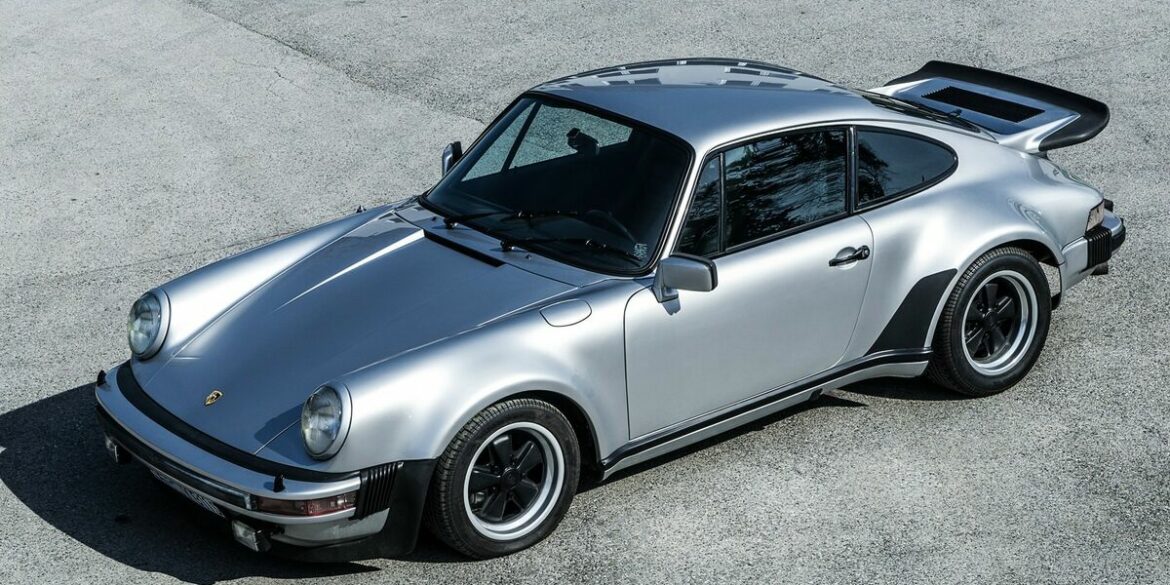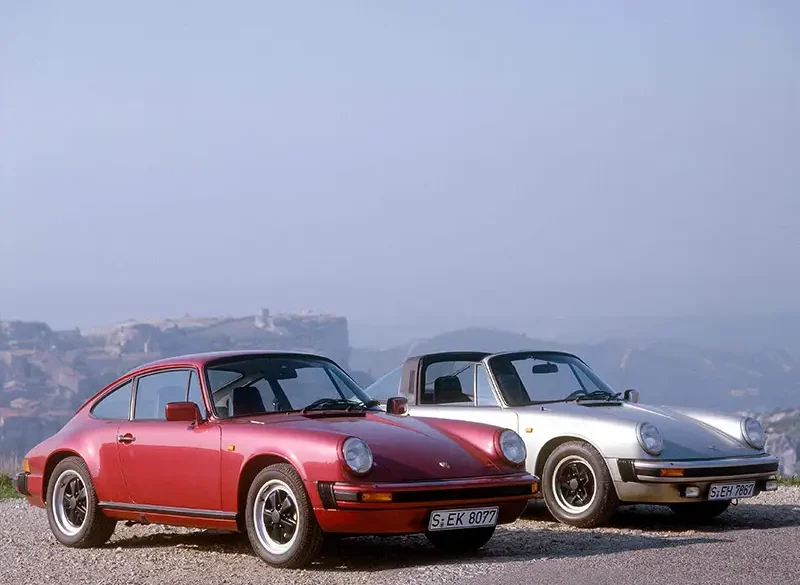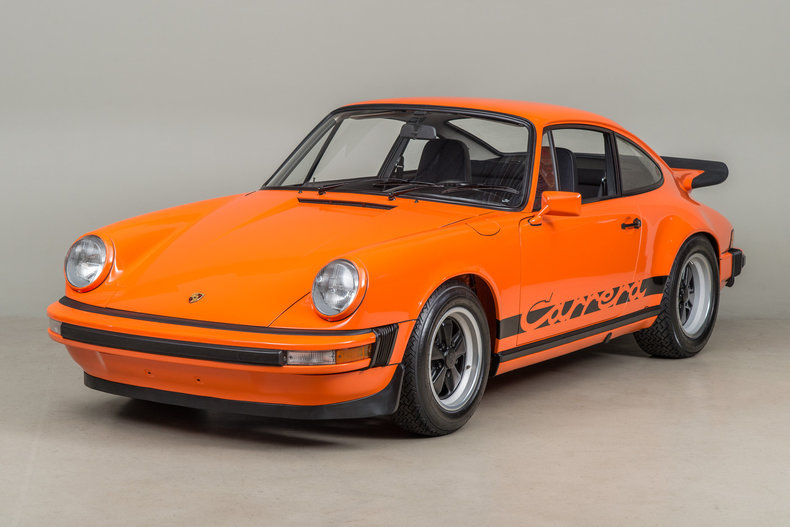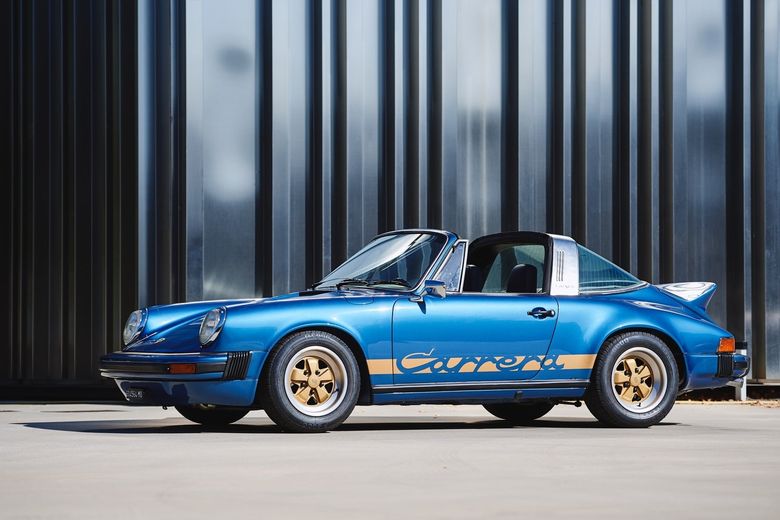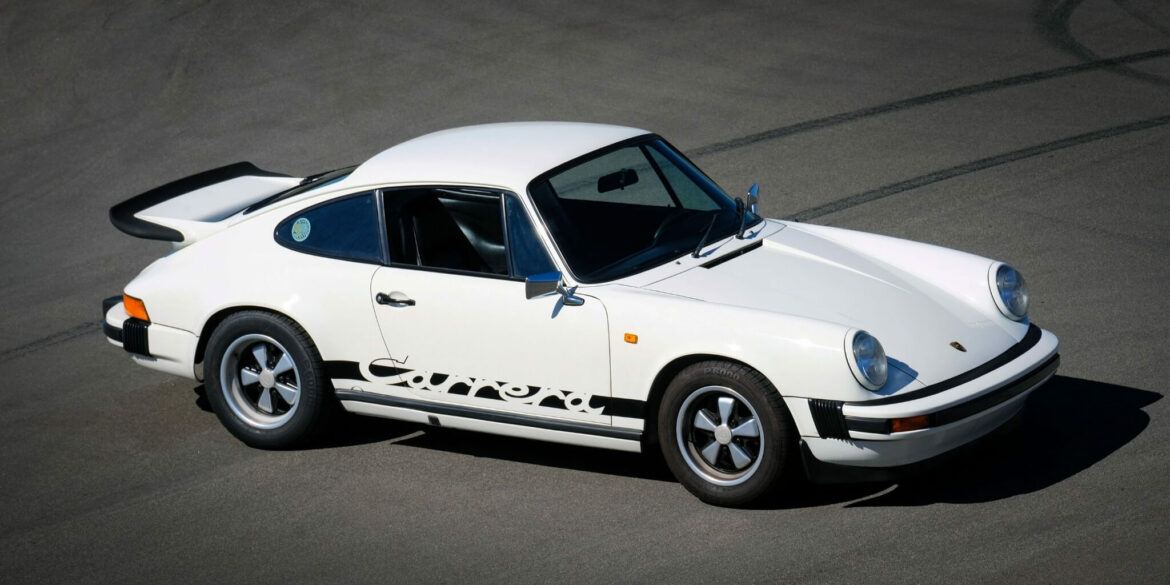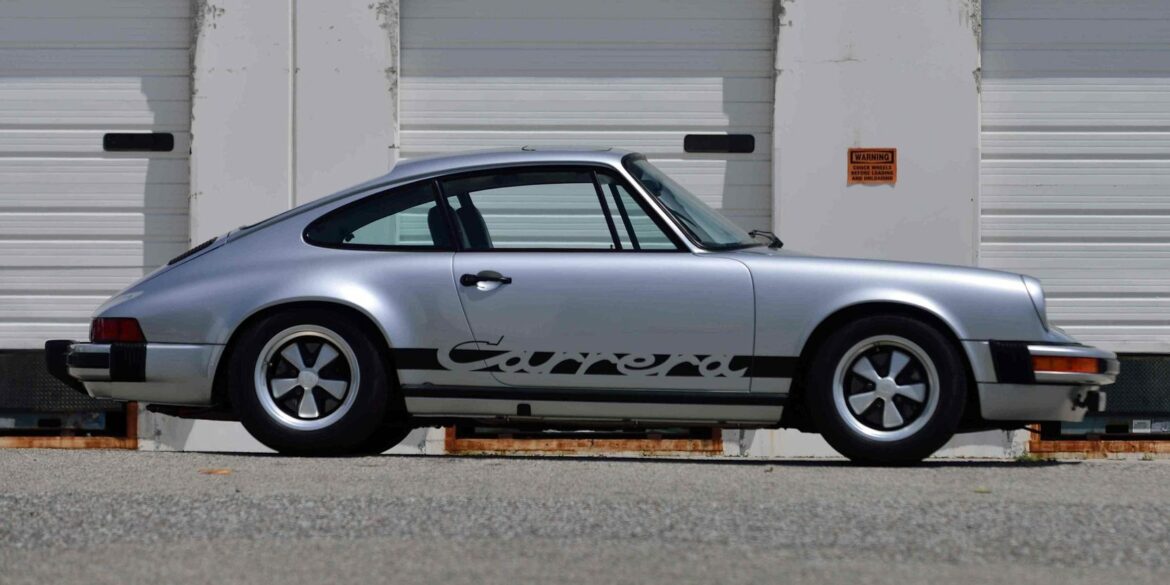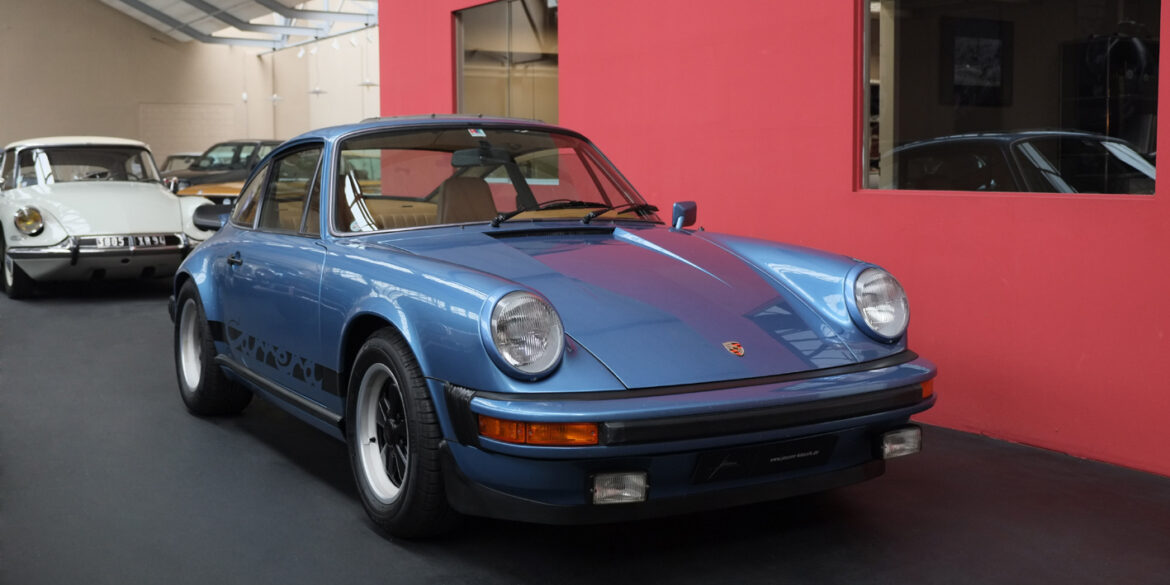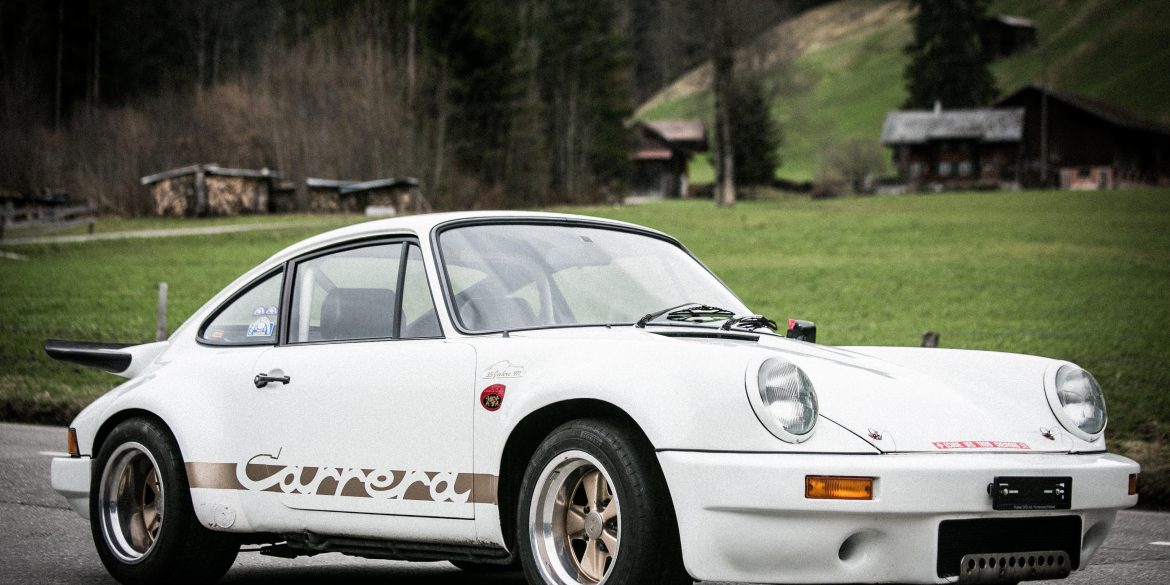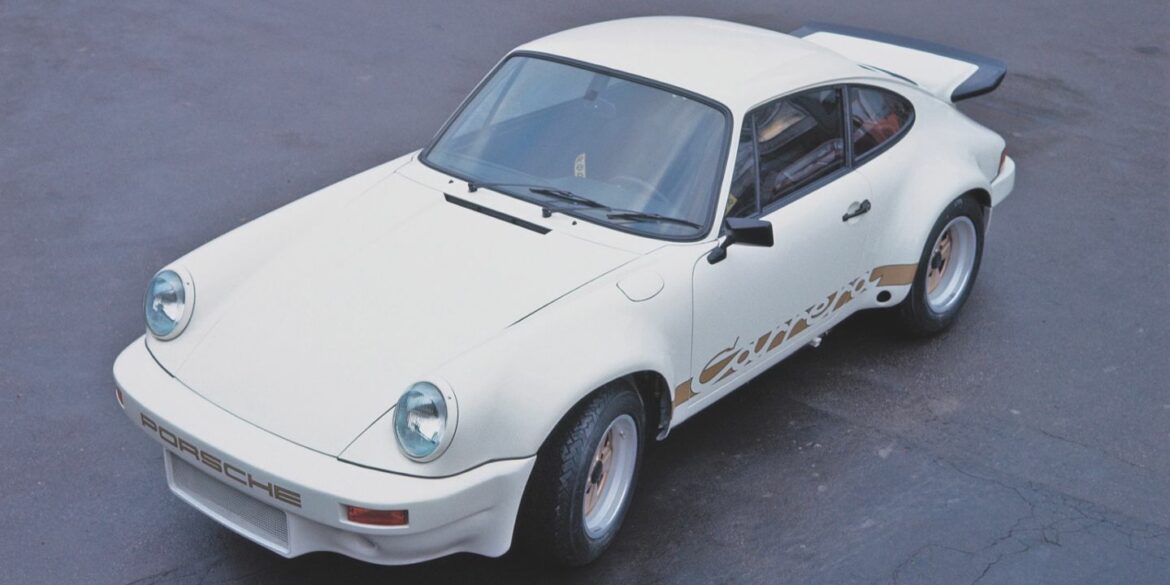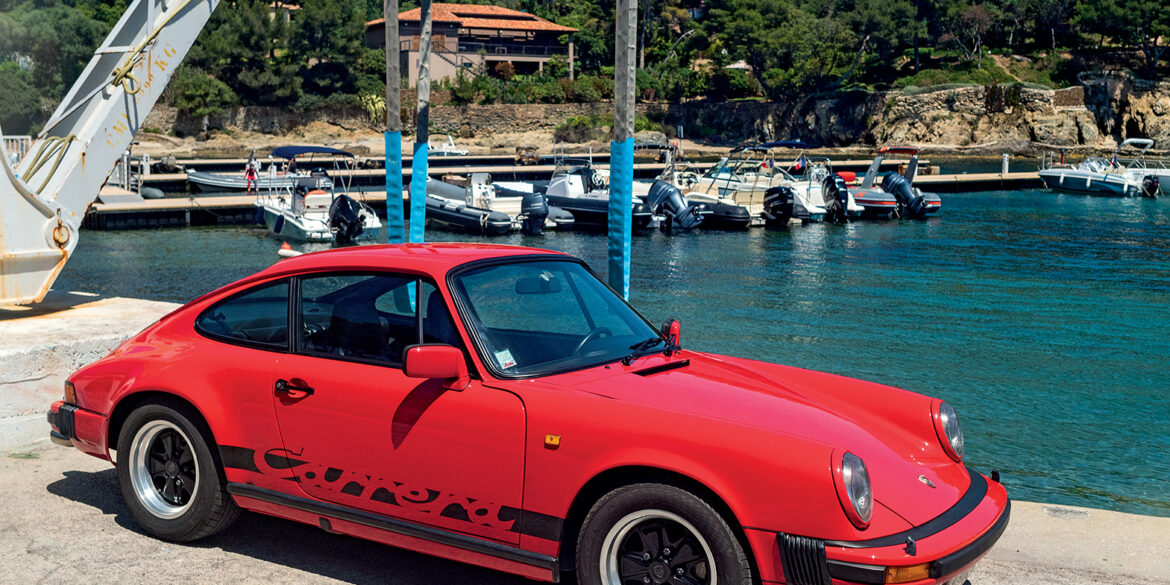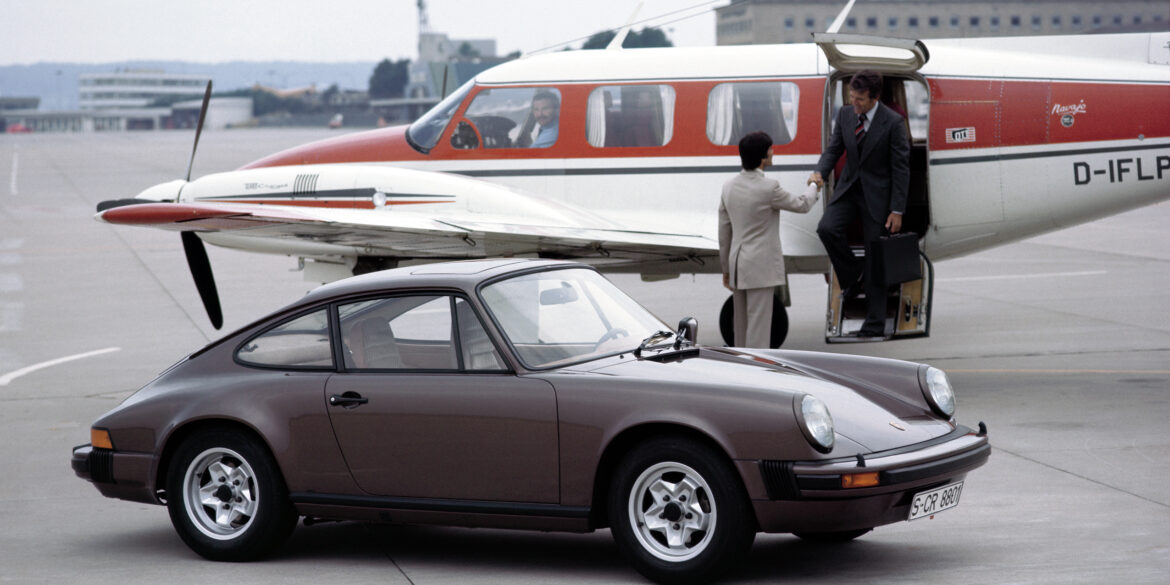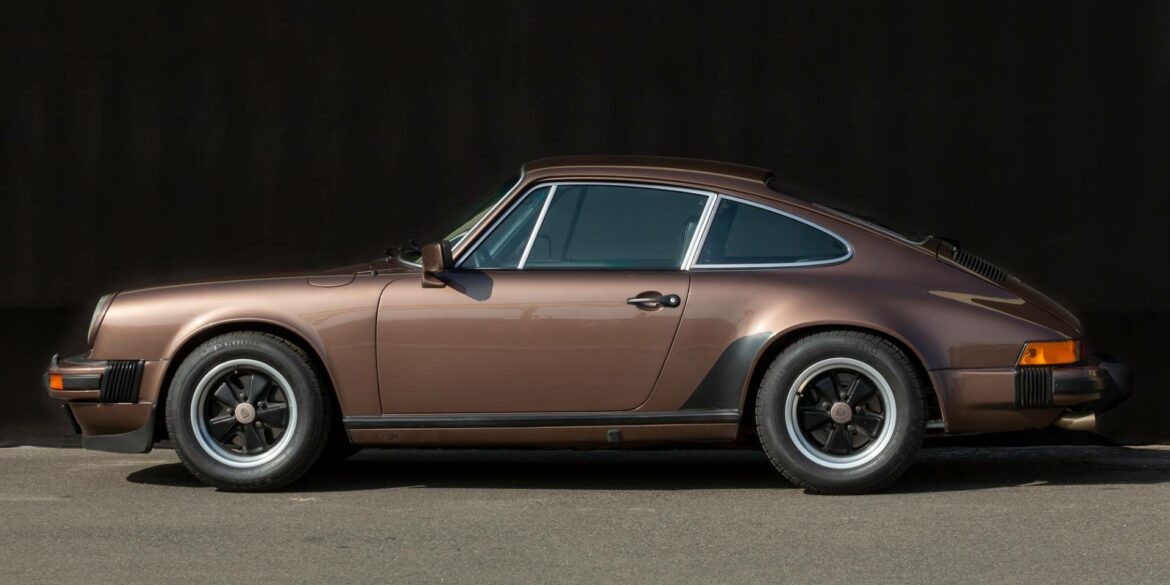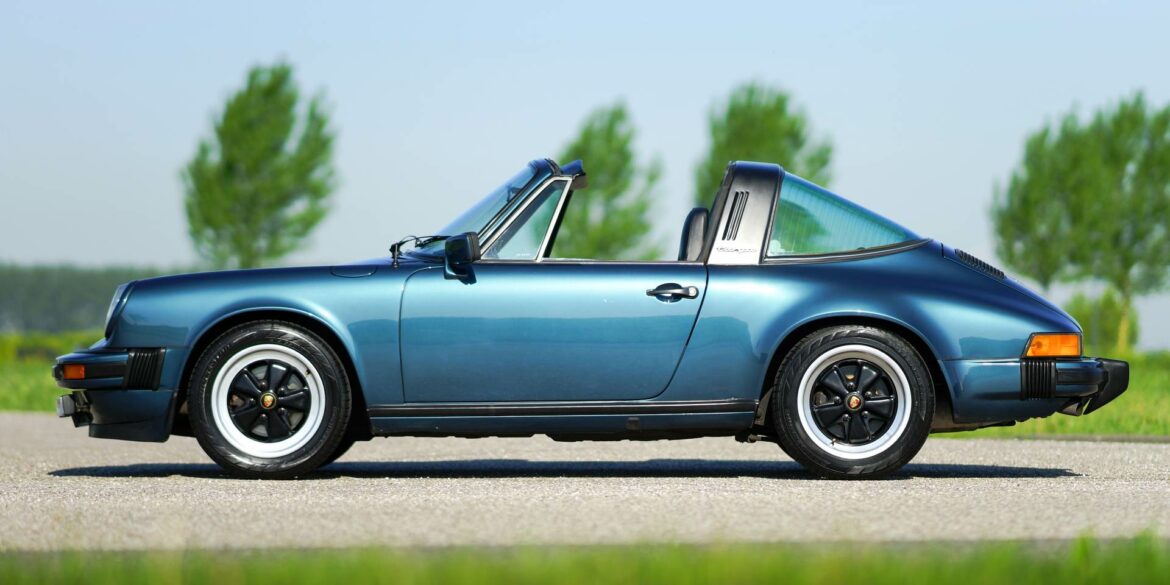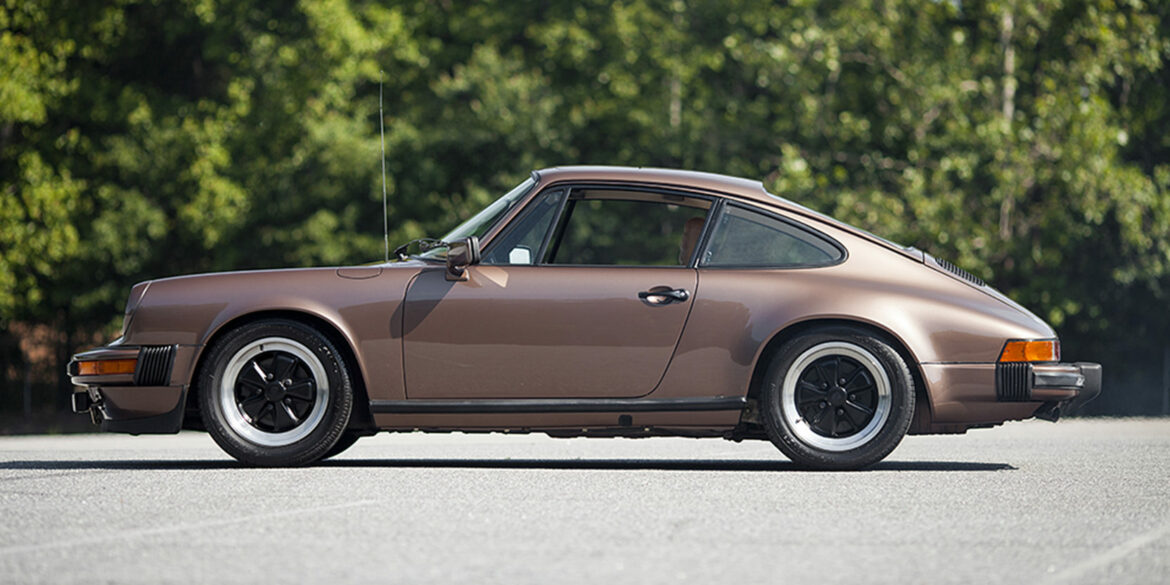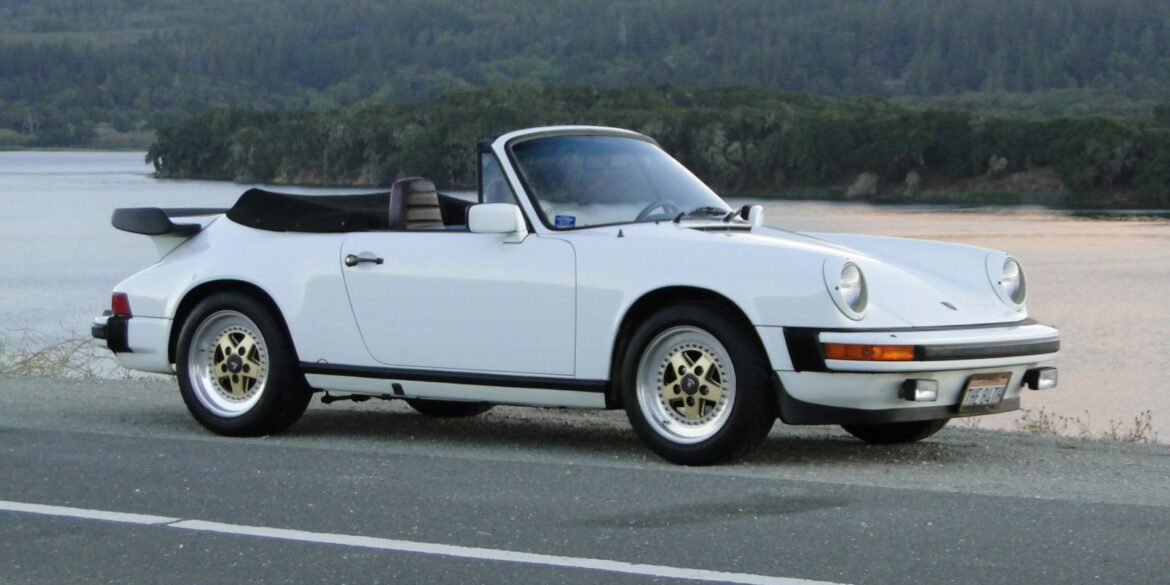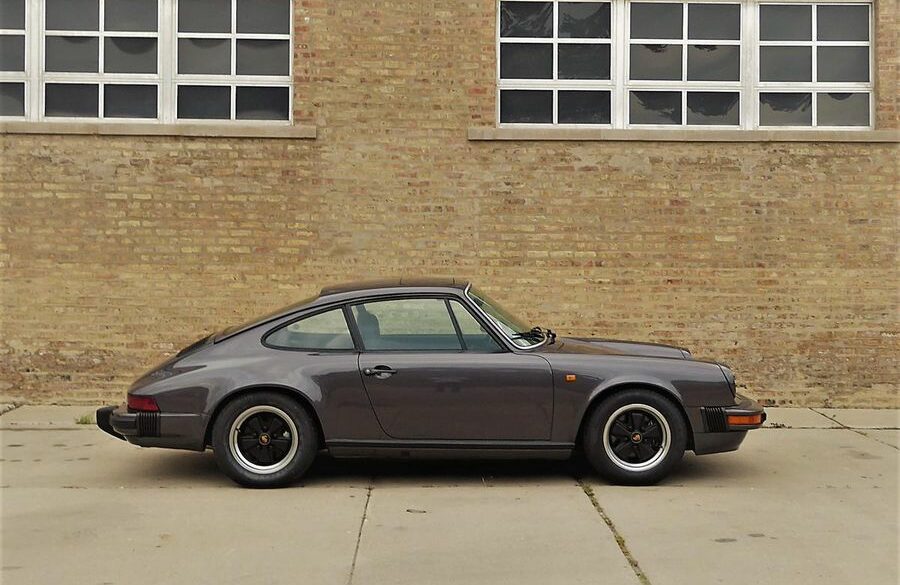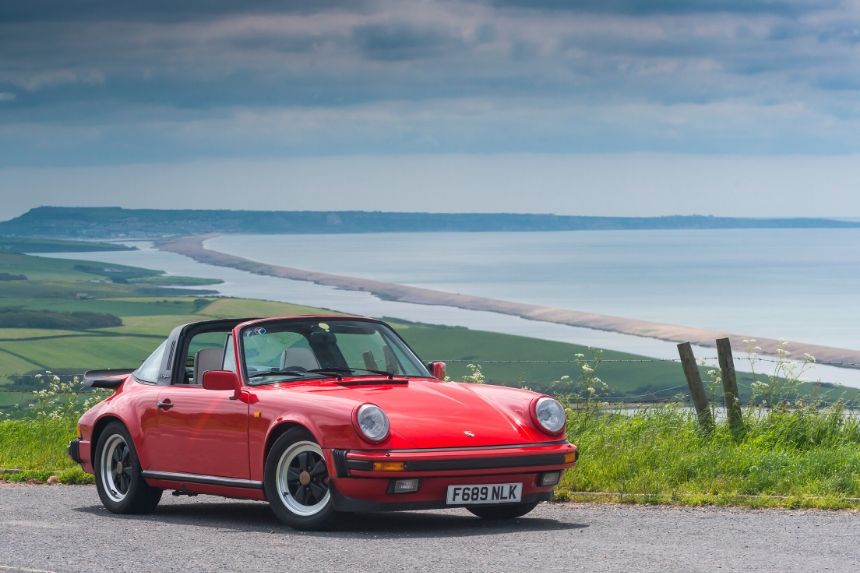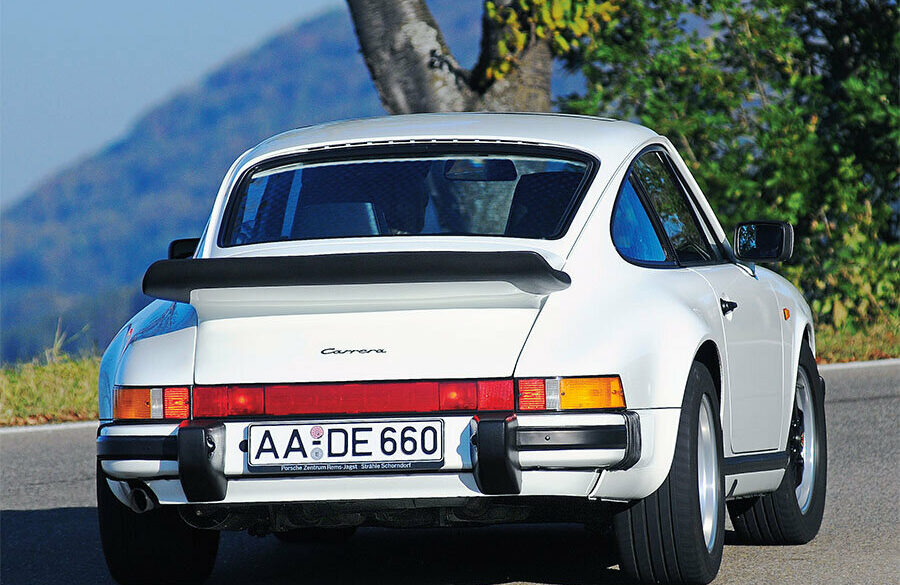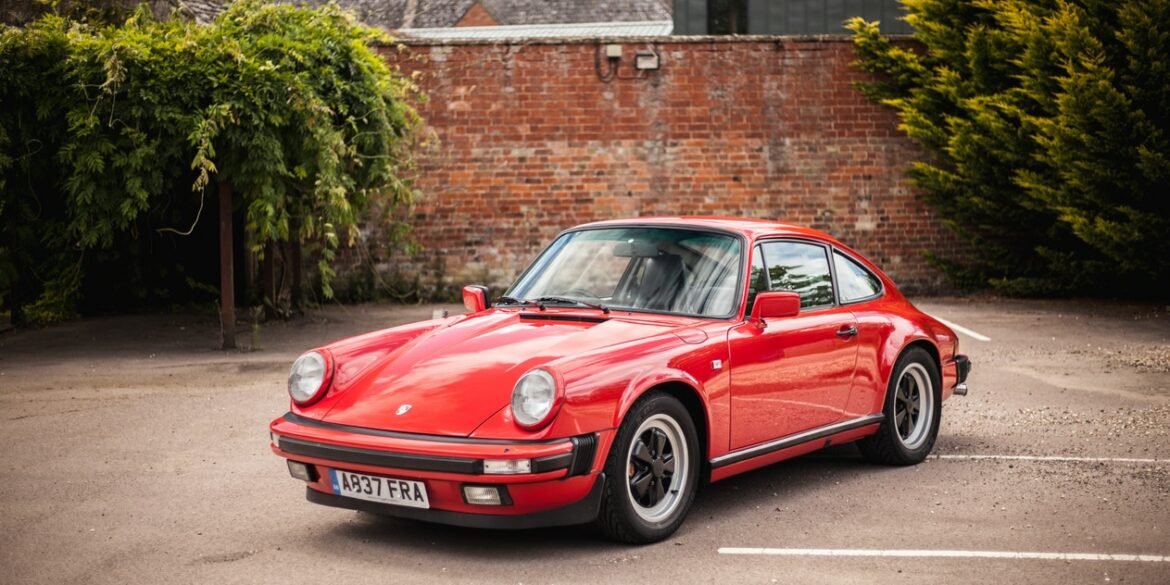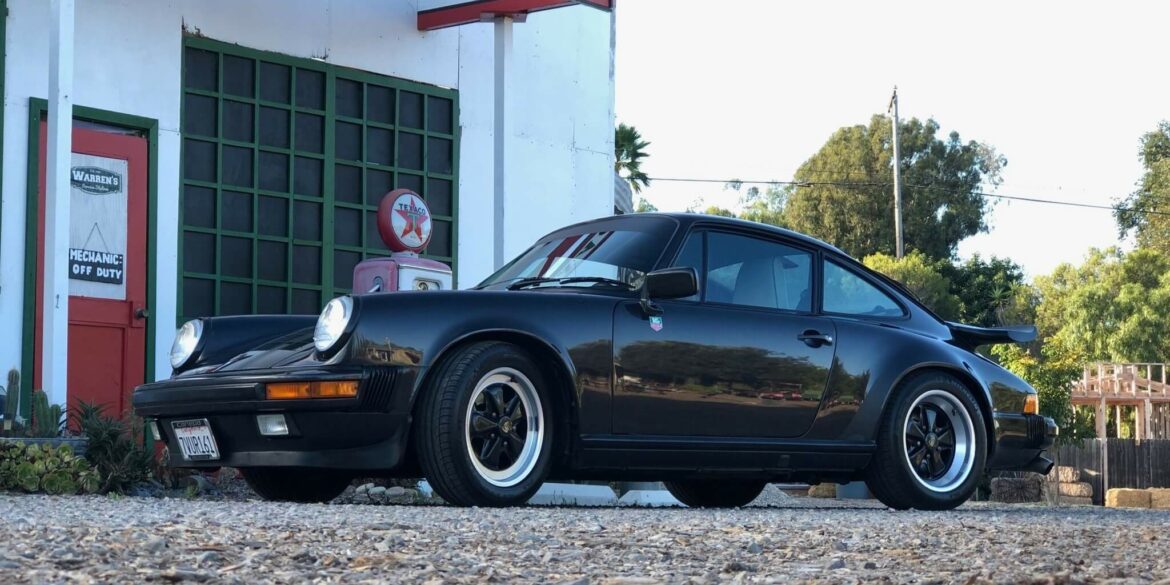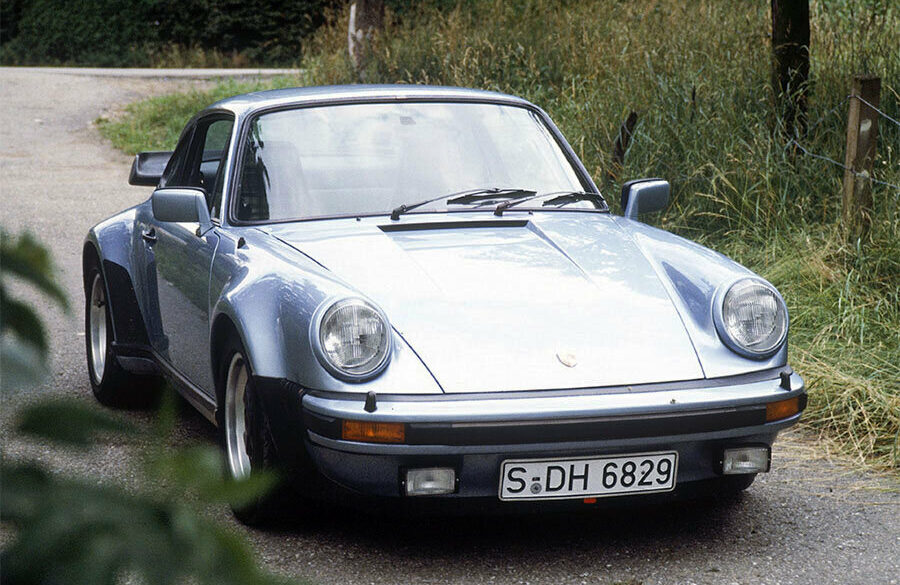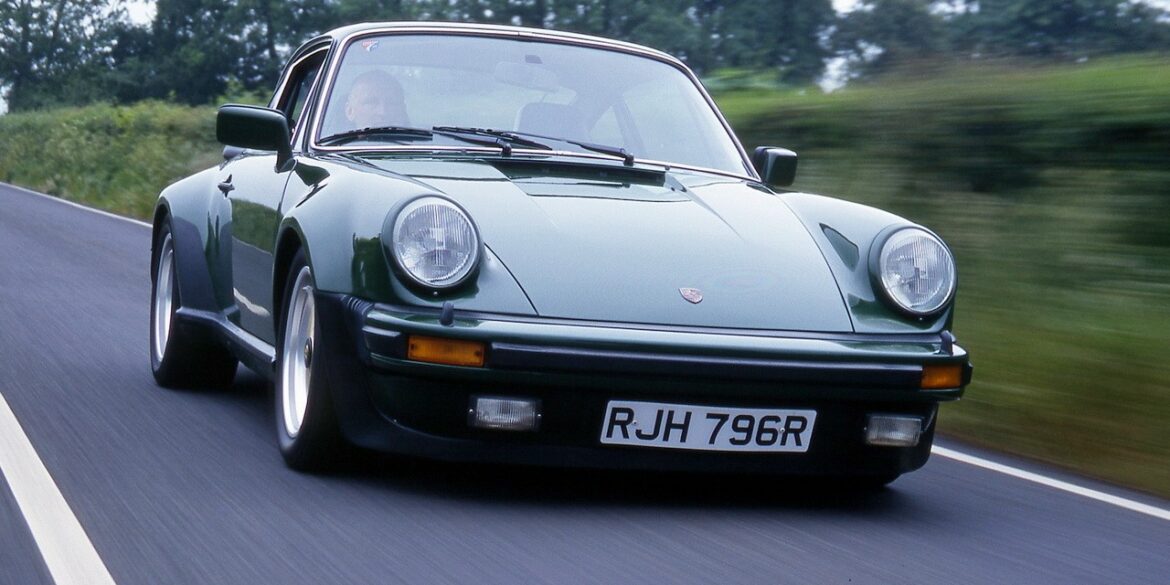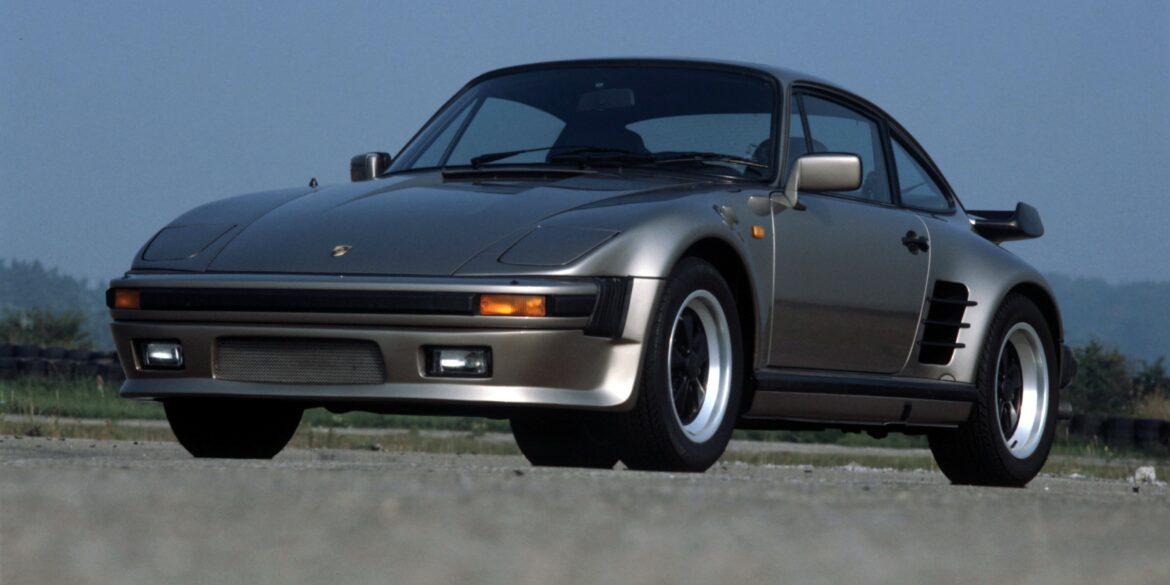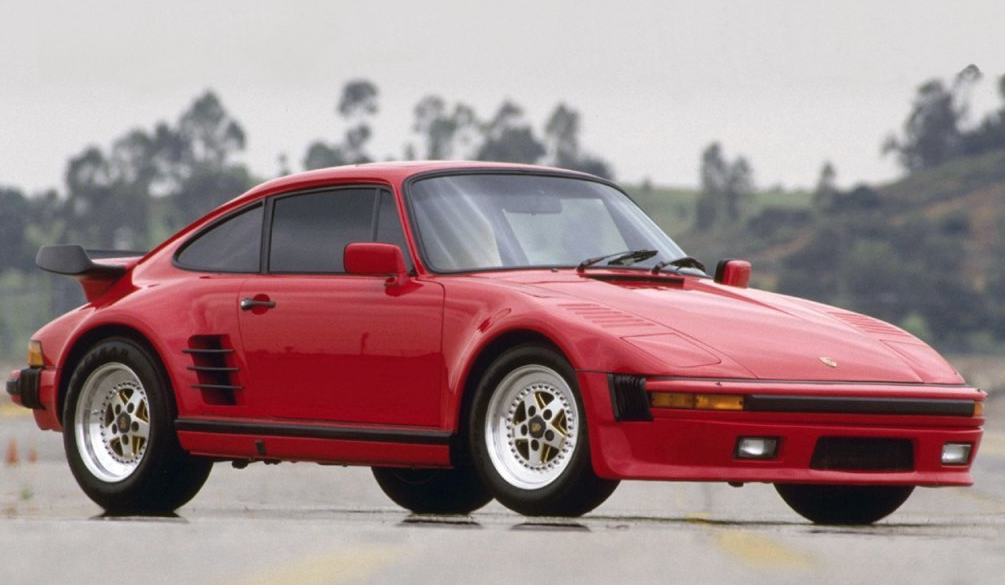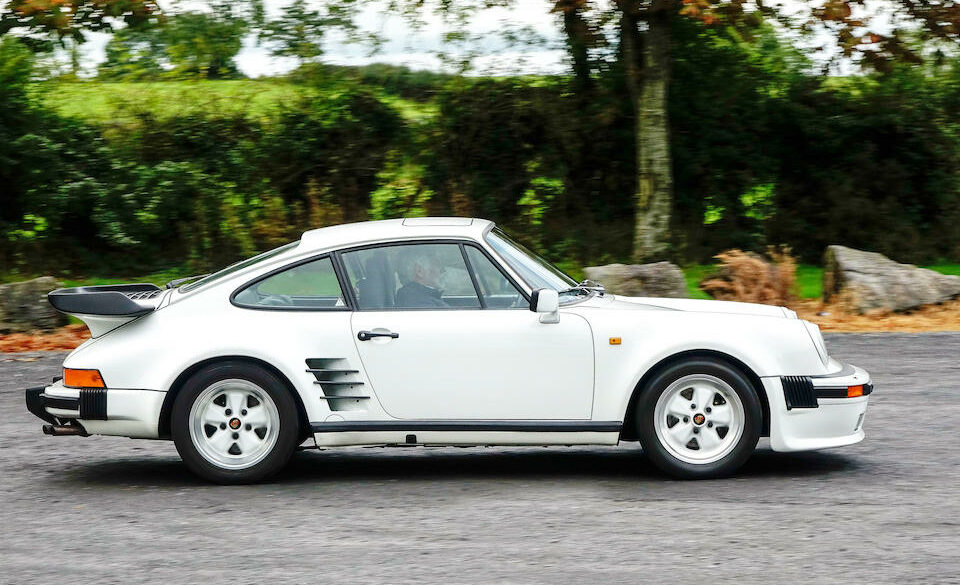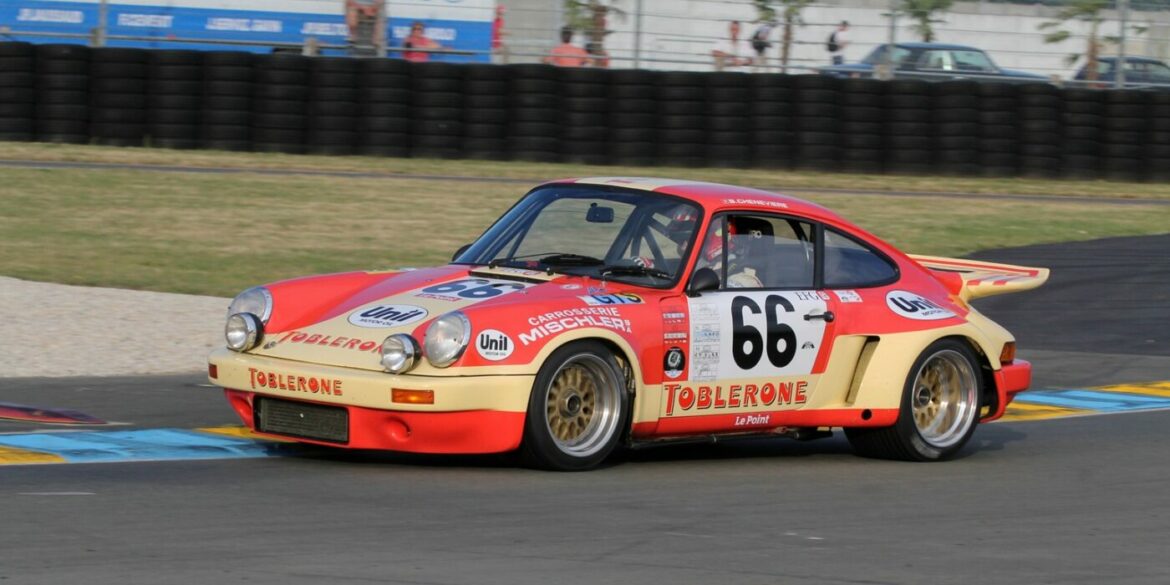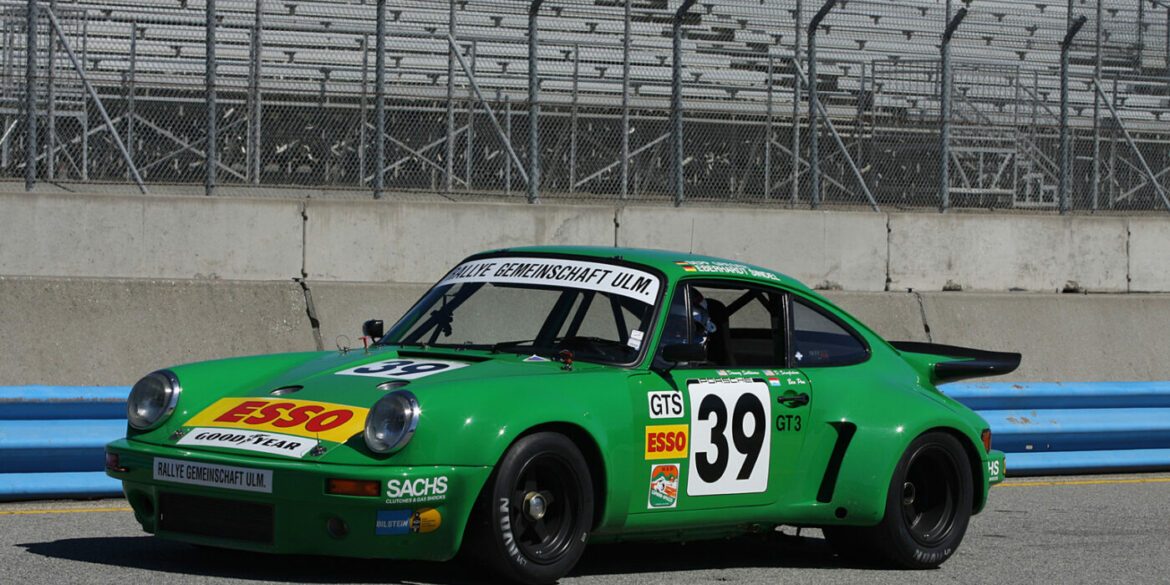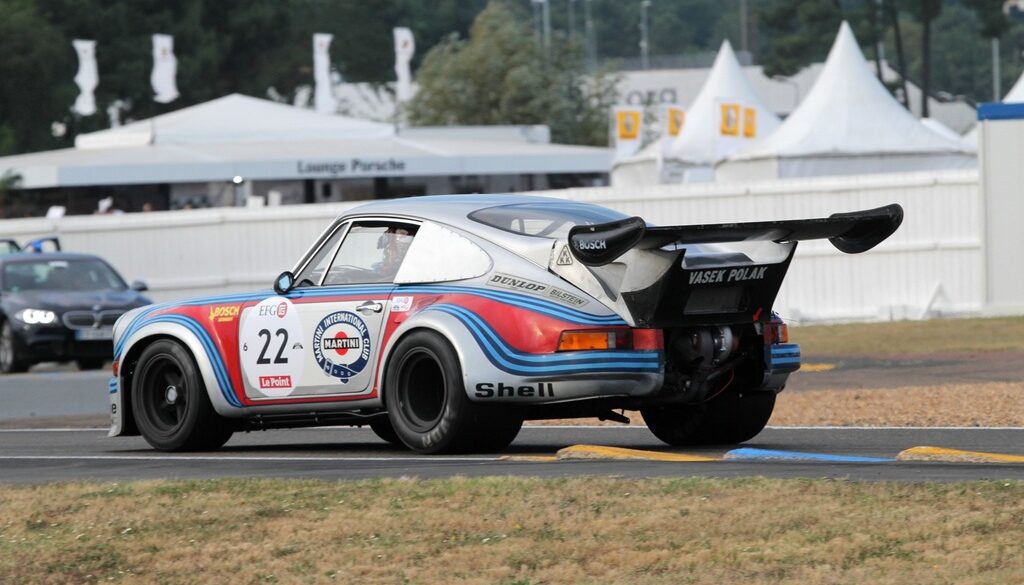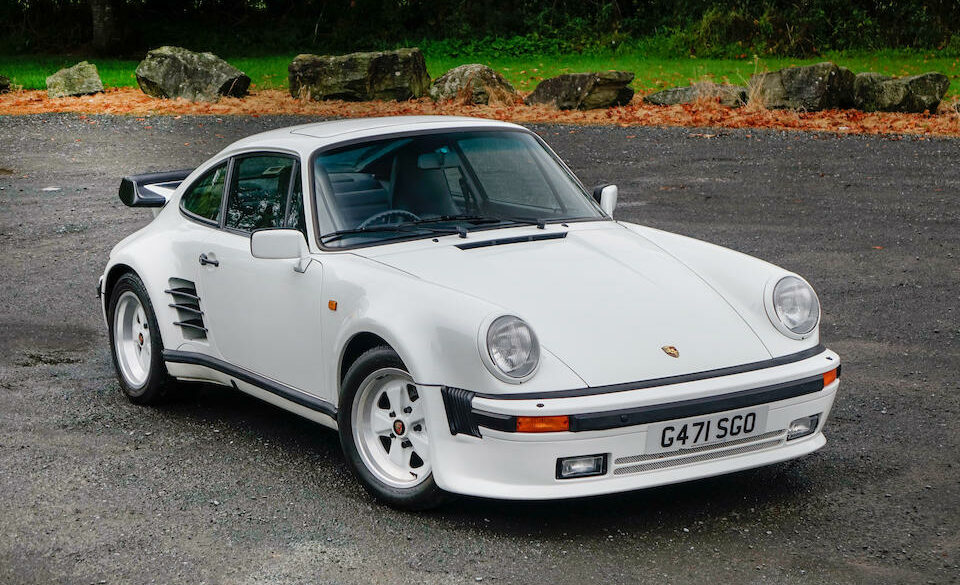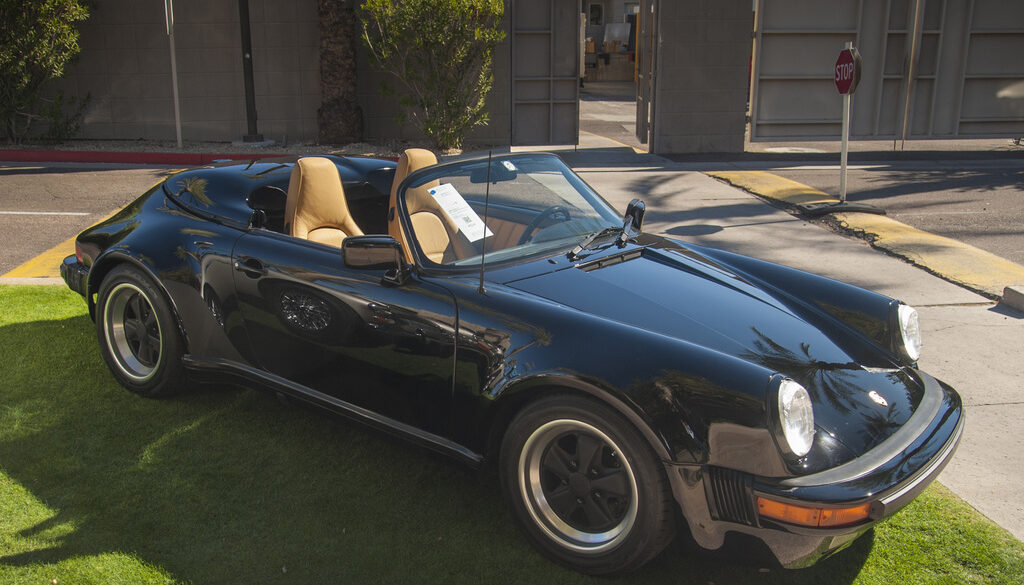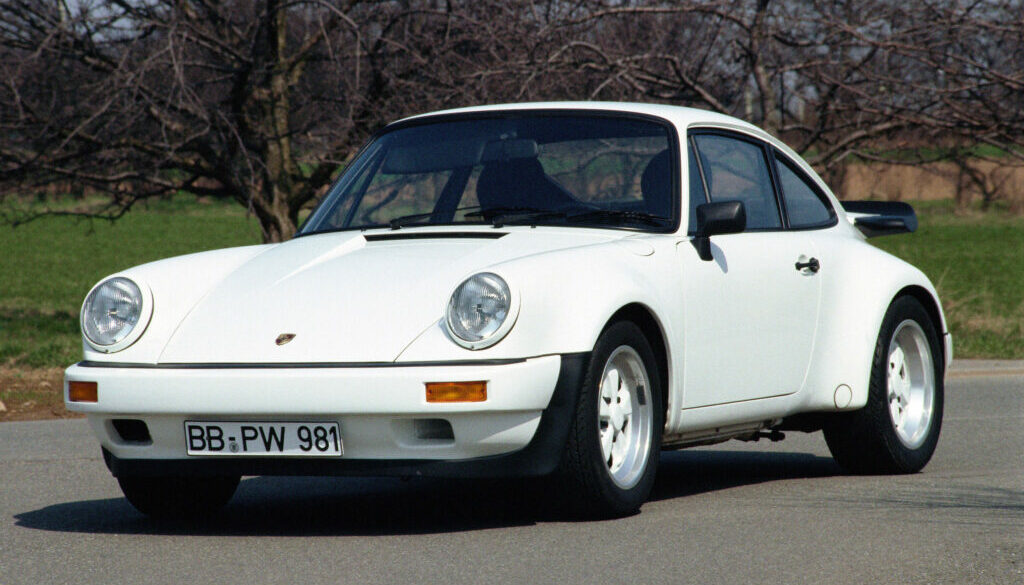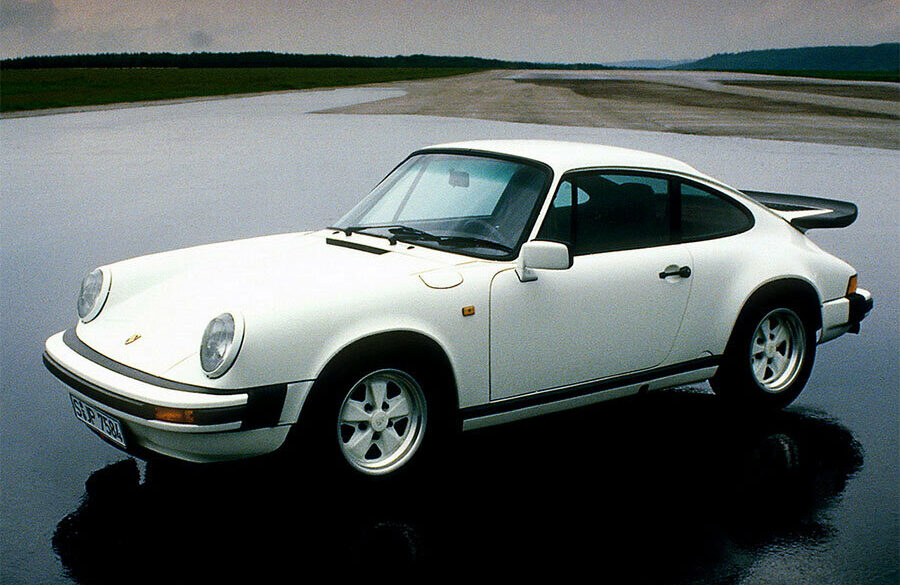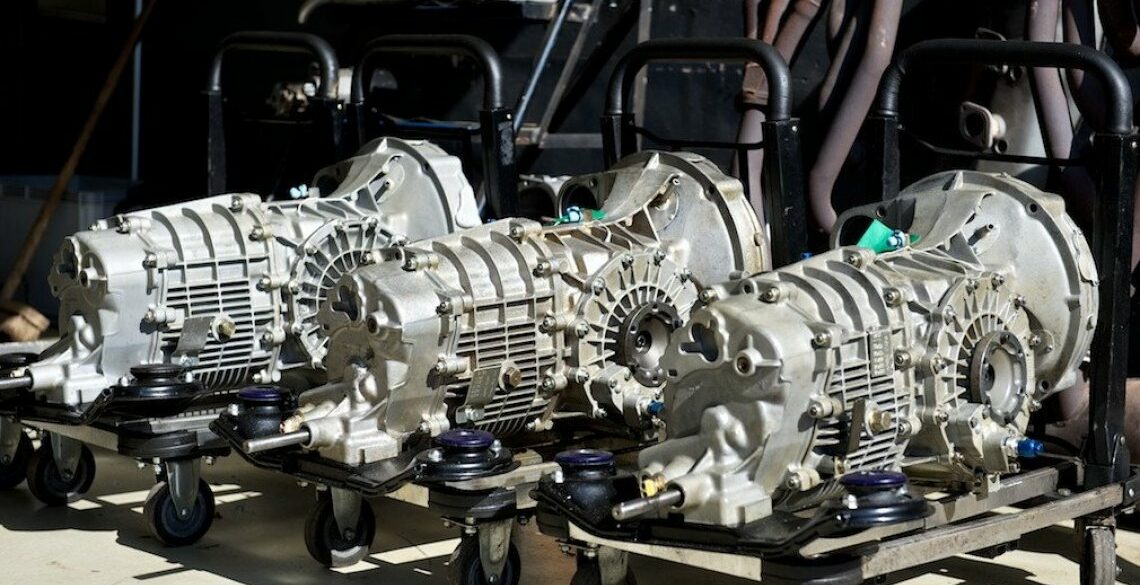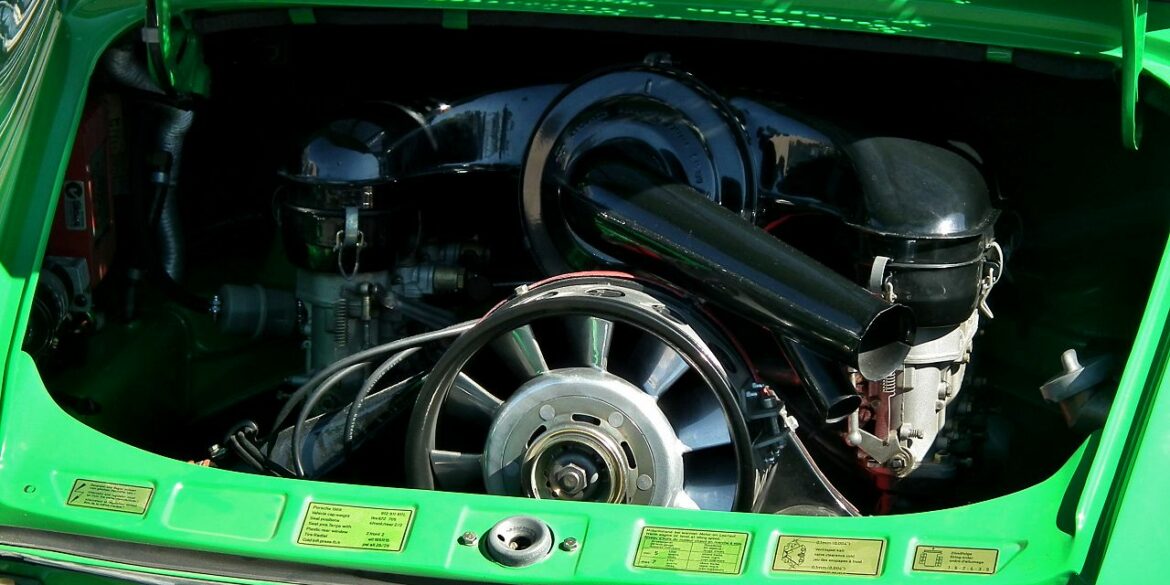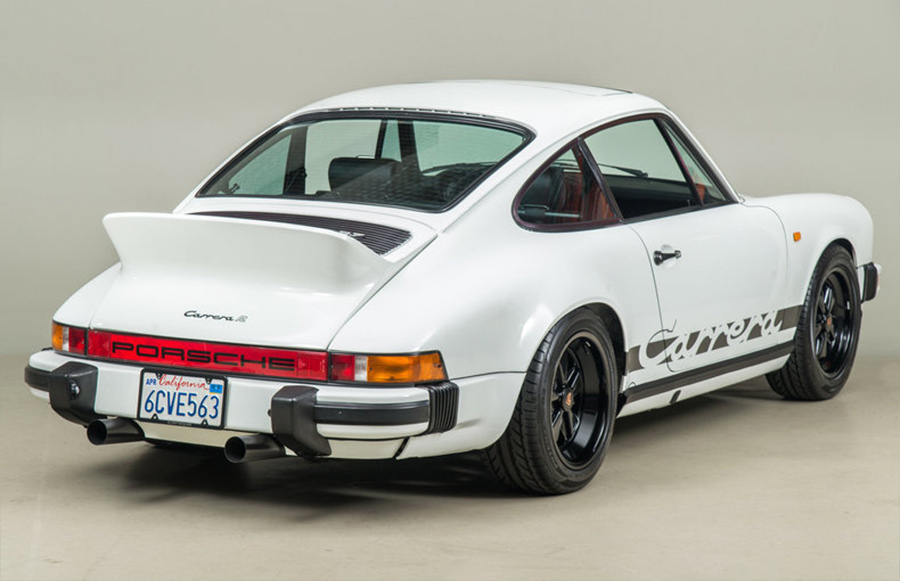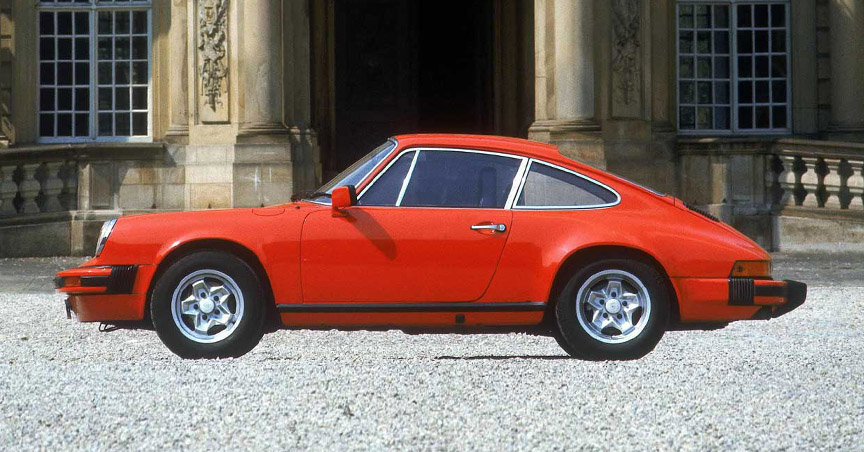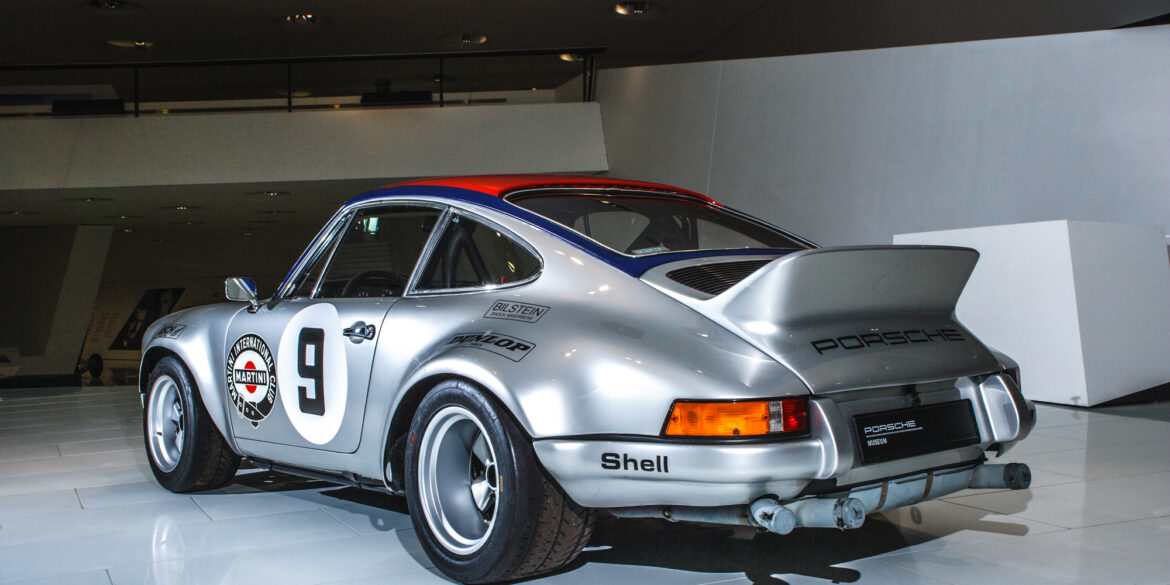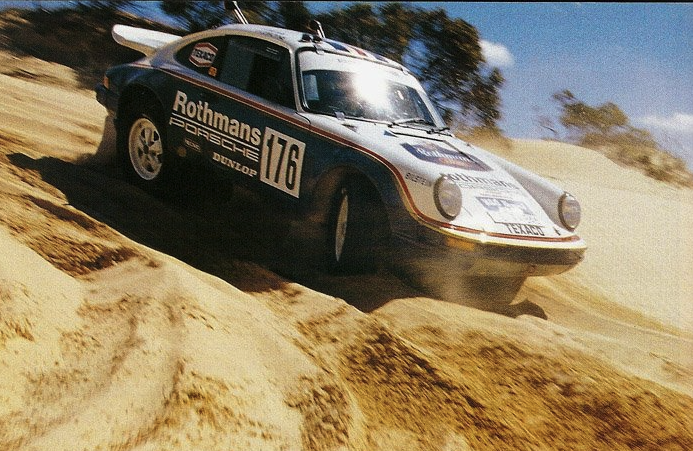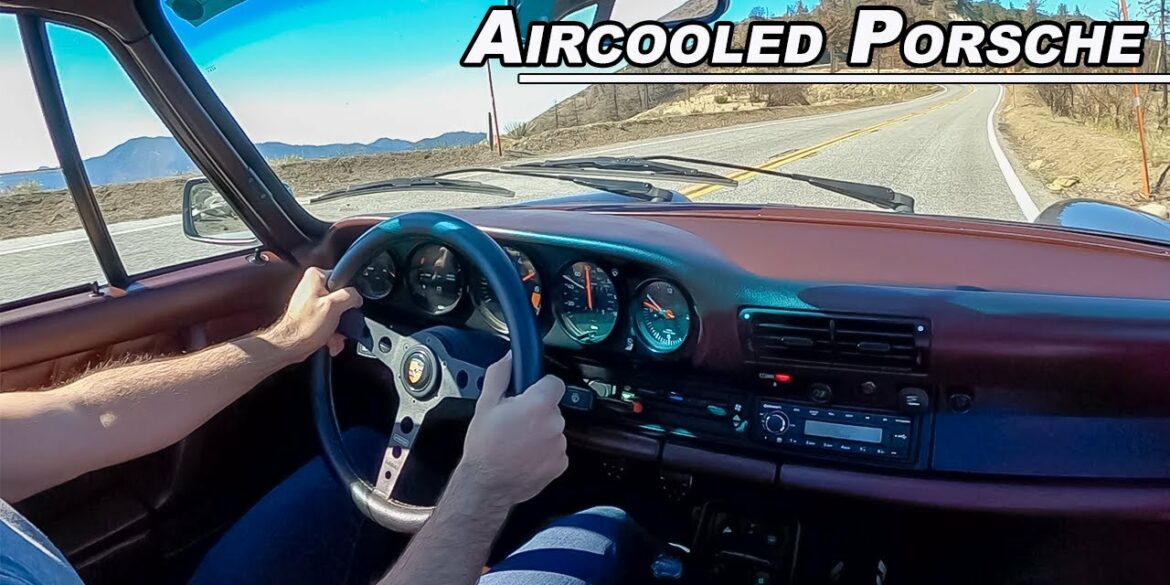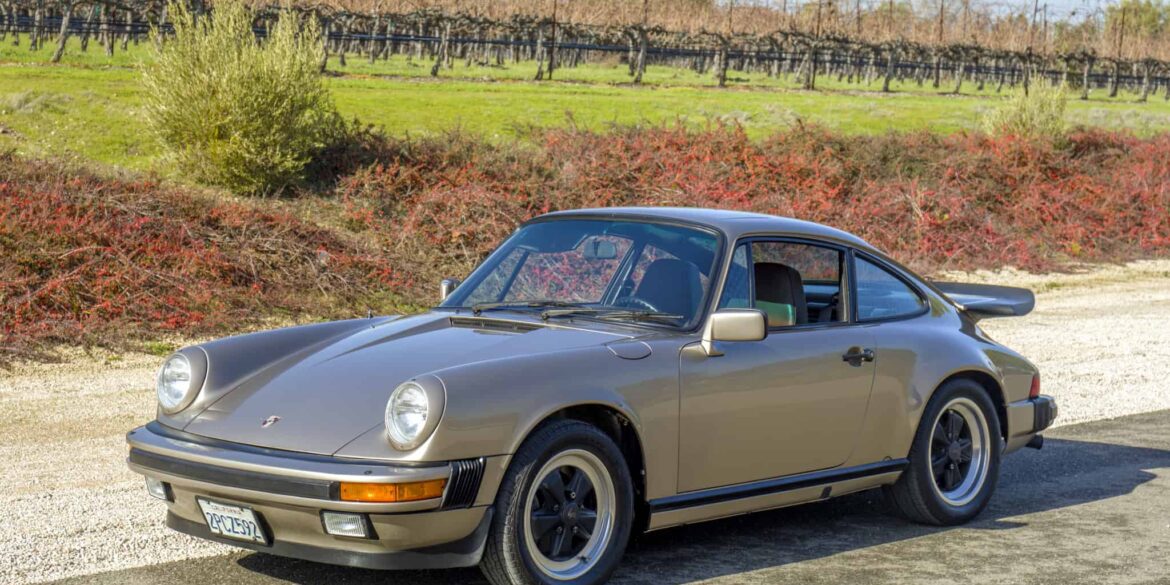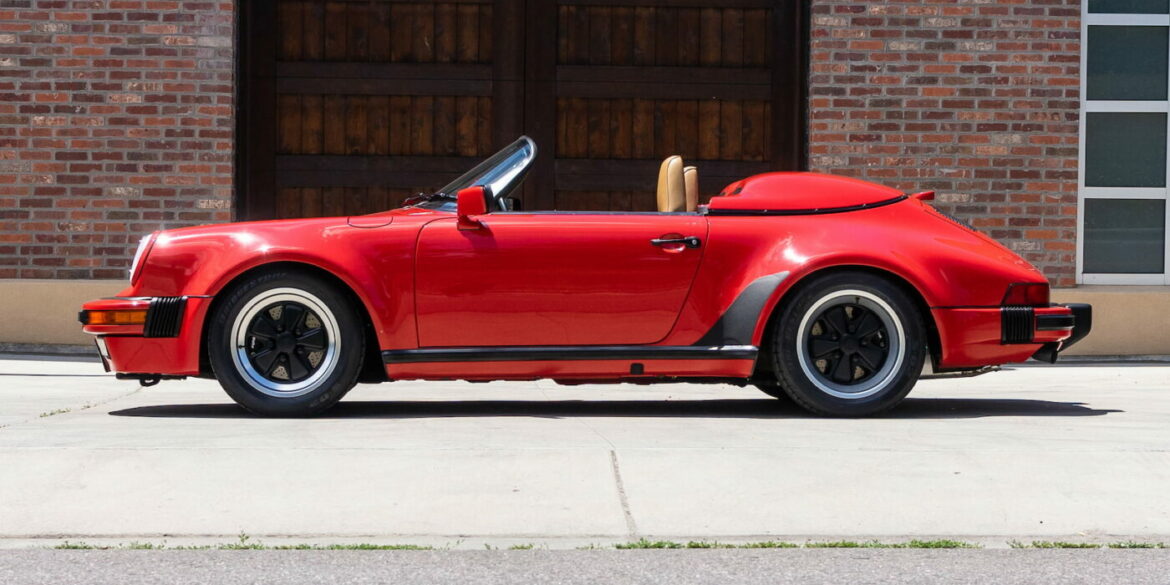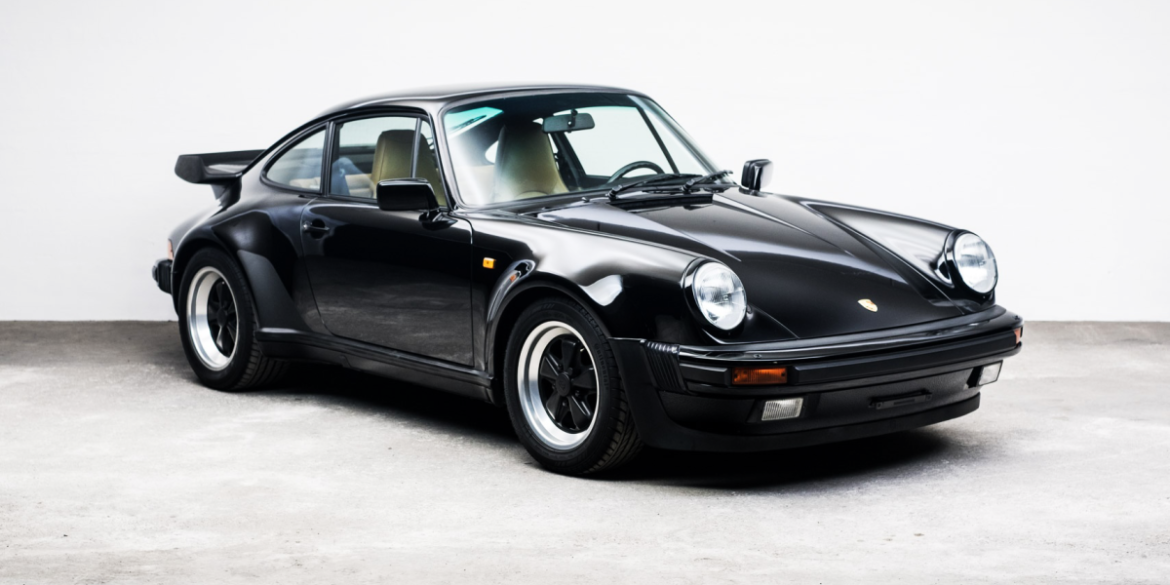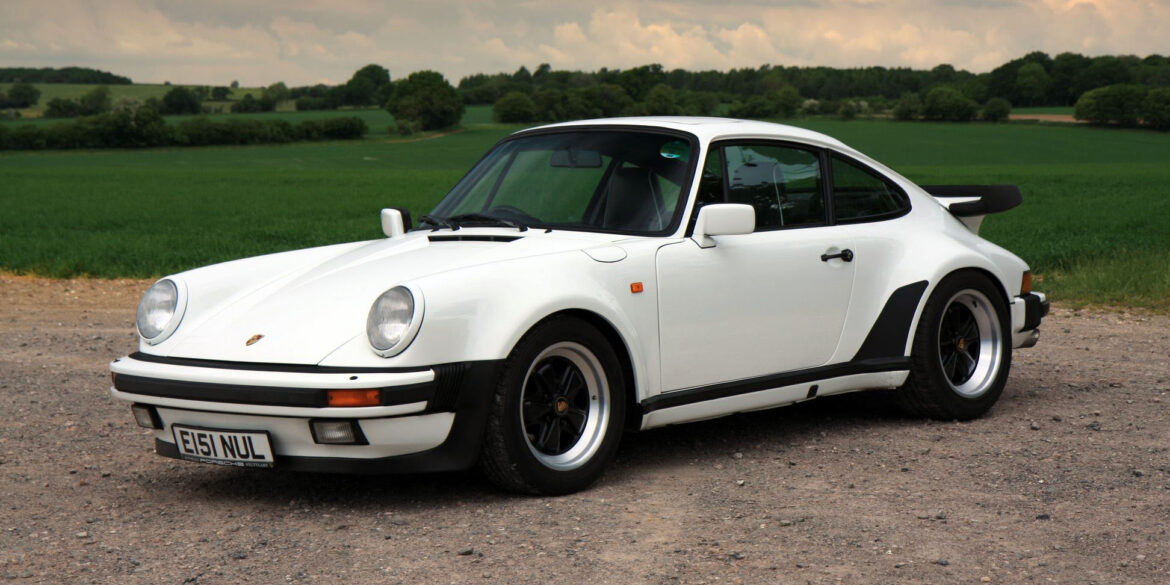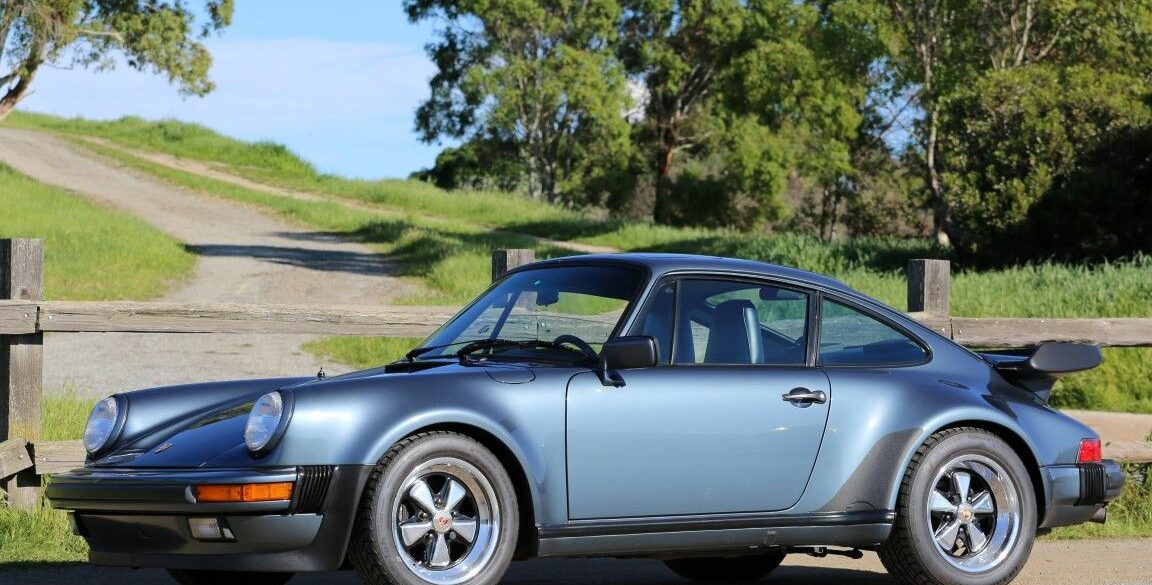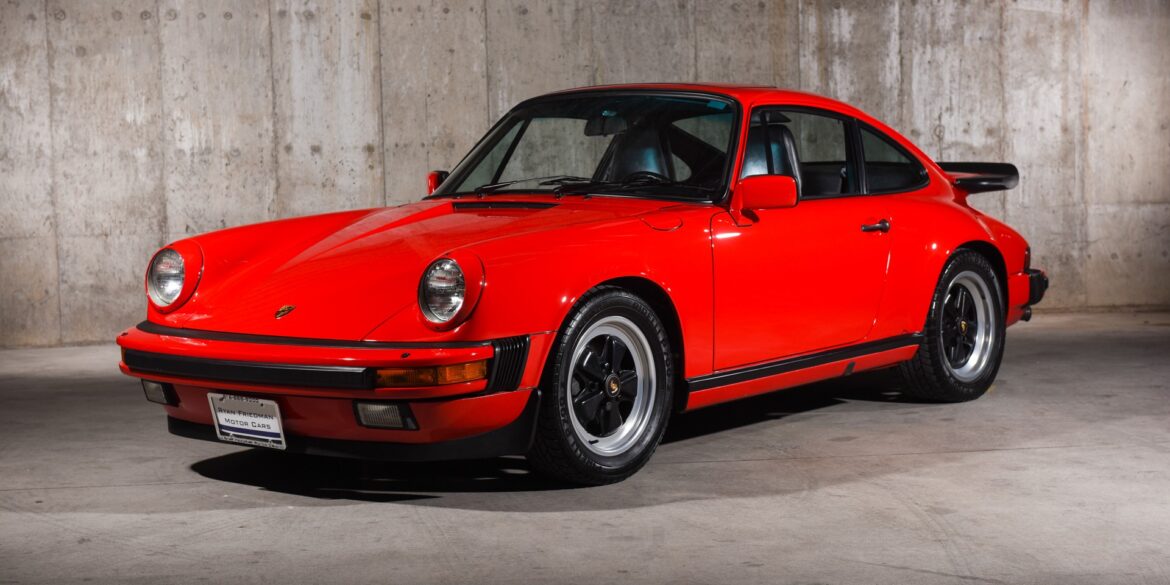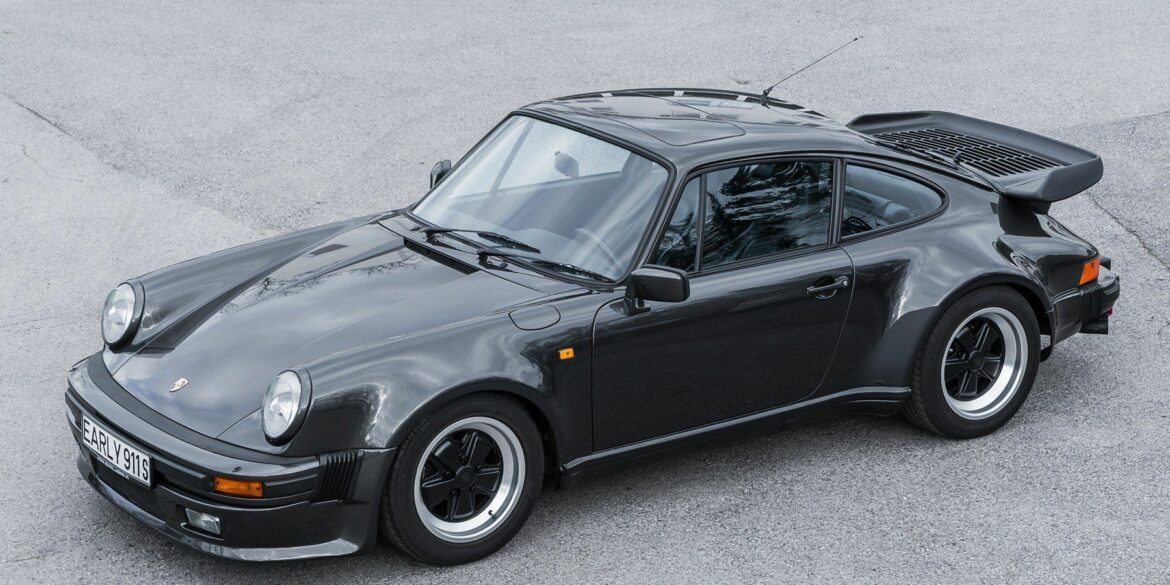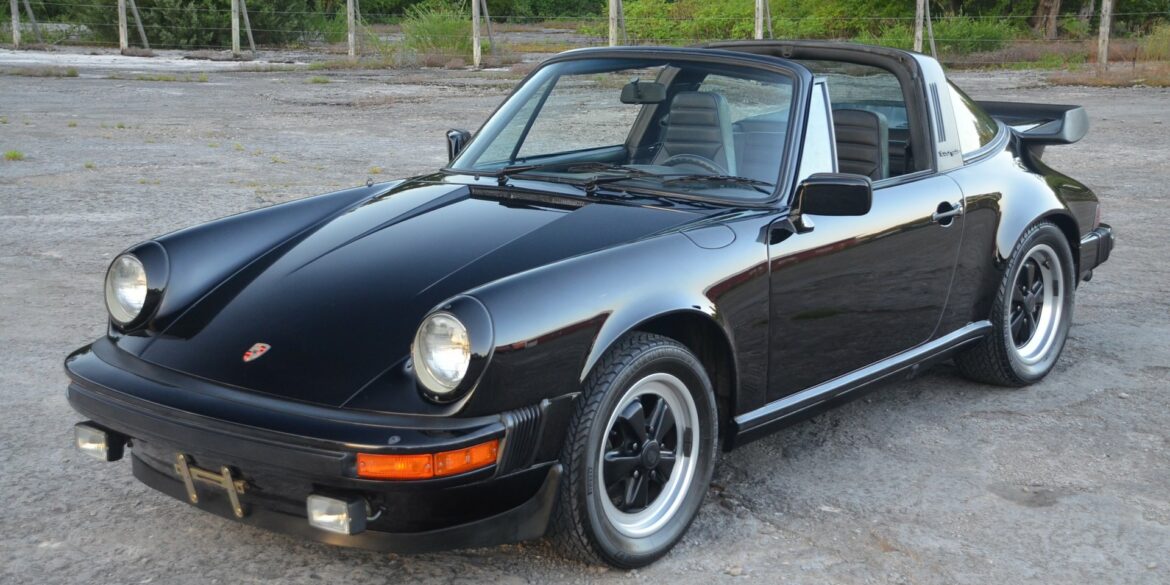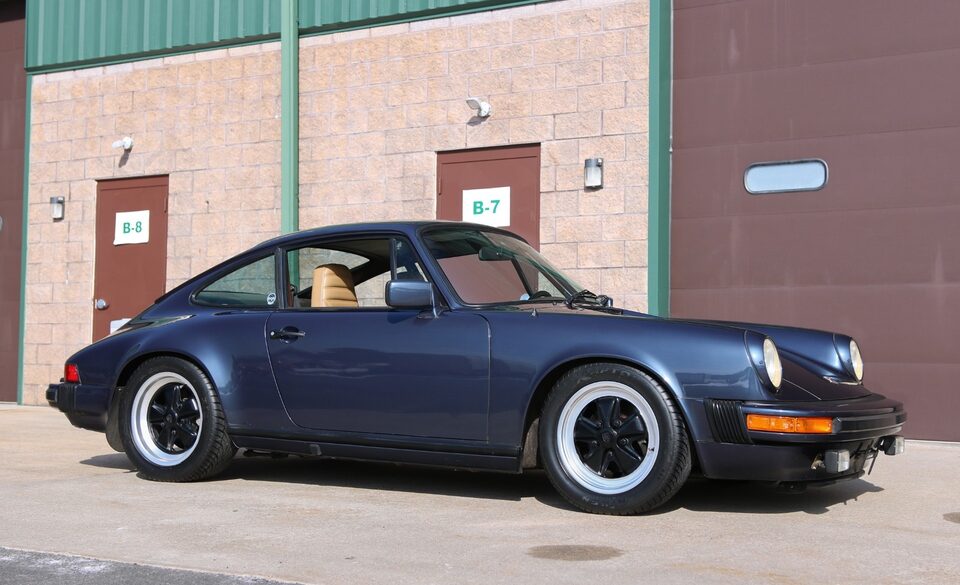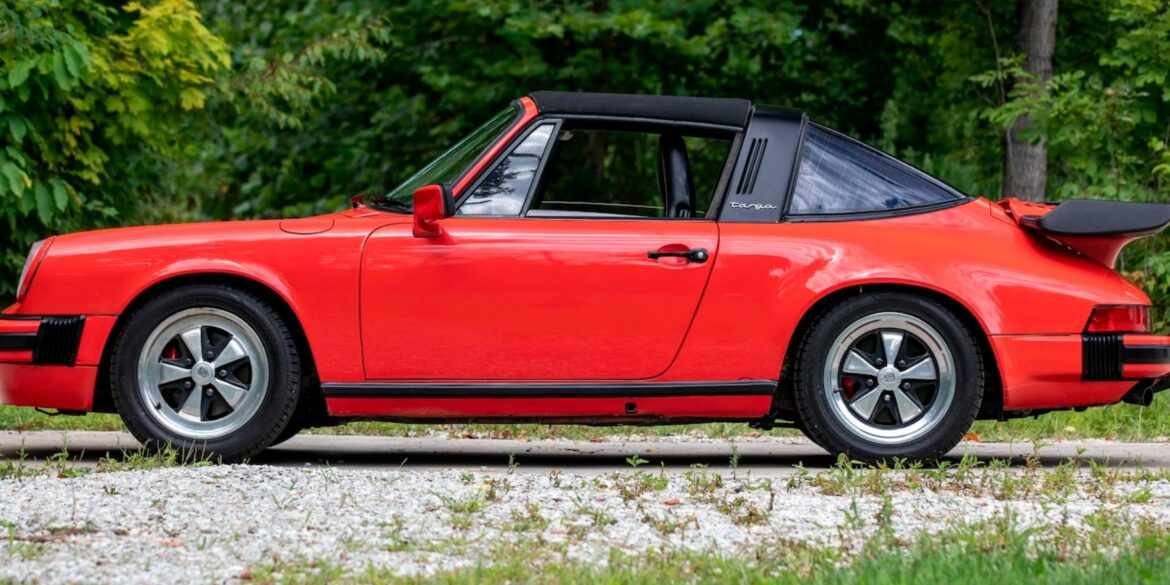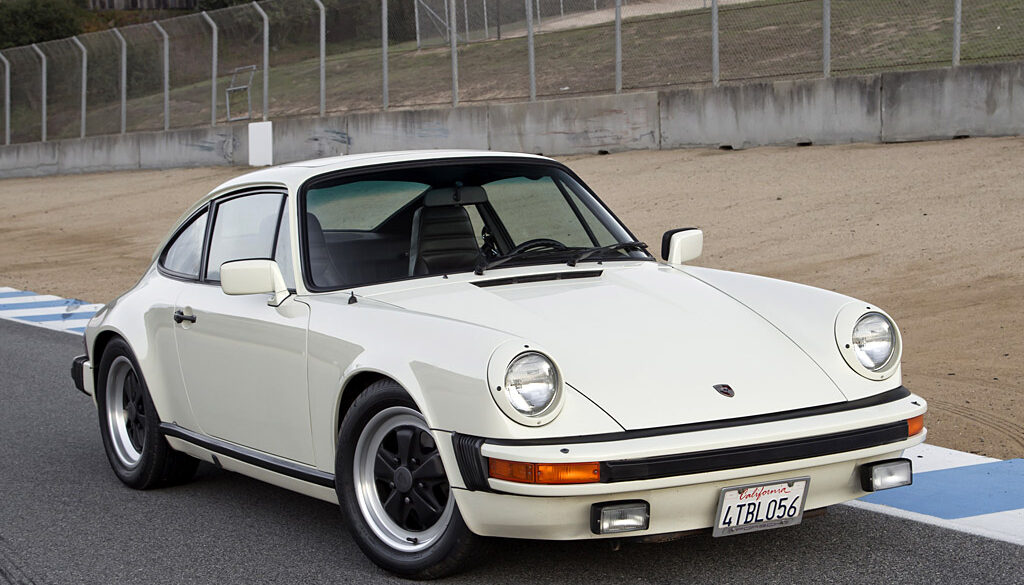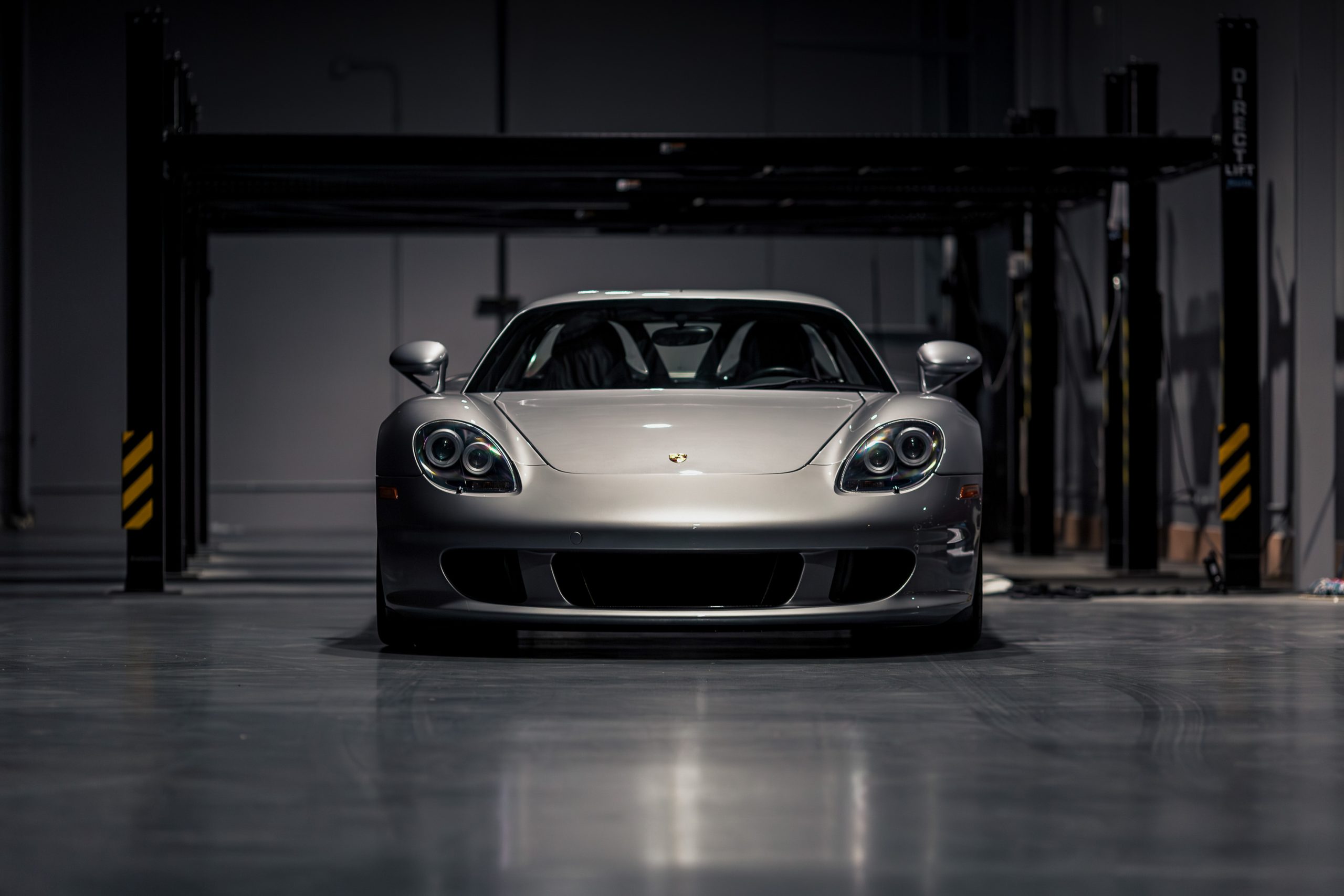Saturday, January 14th, 2023, Mecum Auctions will be offering a 1988 PORSCHE 930 TURBO with the iconic slant nose option. One of only 145 factory Code M505 Flachbau Slantnose coupes imported into the U.S., this 1988 Porsche 930 registers only 65,830 miles on the odometer. Presented in Grand Prix White...
Porsche 911 (G-Series)
The Porsche 911 G model was a true perennial and was built for a full 17 years. During this time, engines were built with 2.7, 3.0 and 3.2 liters. The narrow G-model (from 1974 to 1977) over the 911 SC, the Carrera 3.0 to the Carrera 3.2 gave it a large variety of variants, colors and equipment. The G-Body saw the introduction of impact bumpers to conform with low speed protection requirements of U.S. law, these bumpers being so successfully integrated into the design that they remained unchanged for 15 years. In 1974 the engine size was increased to 2,687 cc, giving an increase in torque. The use of K-Jetronic CIS Bosch fuel injection in two of the three models in the line up – the 911 and 911S models, retaining the narrow rear wings of the old 2.4, now had a detuned version of the RS engine producing 150 and 175 bhp (110 and 129 kW) respectively. See all of our G-Body (2nd Gen 911) Research.
All
- 911 (G-Series)
- 911 Carrera 3.0 (G-Series)
- 911 S (G-Series)
- 911 SC (G-Series)
- 911 Carrera 3.2 (G-Series)
- 911 SC Safari
- 911 Turbo (930)
- 911 Carrera RSR Turbo 2.1
- 911 Carrera RSR 3.0
- 911 SC San Remo
- 911 Carrera 3.2 Clubsport
- Porsche 953
- 911 Carrera 25th Anniversary
- 911 Carrera RS 3.0
- 911 SC RS
- 911 Turbo LE
- 911 3.2 Speedster
- 911 Carrera 2.7 (G-Series)
- 911 Carrera Commemorative
- 911 Turbo 2.7
- Porsche 954
The Porsche 911 Carrera 3.2 was produced for model years 1984 to 1989. If you are looking to get into classic Porsche 911s, the 3.2-liter Carrera lineup is a good place for a beginner to start. Over 70,000 units were produced, and they are still plentiful, affordable, and blend the...
1988 Porsche 911 Carrera 3.2 Clubsport Auction to Watch What a way to start the new year, finding a great 1988 Porsche 911 Carrera 3.2 Clubsport on Collectingcars.com. The Carrera 3.2 Clubsport was one last hurrah for the G-Series 911 and one of the most underrated Porsche’s ever. The 911...
If you head over to Bring A Trailer now, you’ll have the chance to acquire one of the reported 33 US-market examples of a 1987 Porsche 911 Turbo that came equipped with the factory flachbau bodywork (M505). The package featured pop-up headlights, vented front fenders, side strakes, and extended side...
Collecting Cars is proud to offer a striking example of a 1978 Porsche 911 3.0 SC featuring an all-black colour scheme and a number of cosmetic modifications. In model year 1978, the 911 model range was reduced to two models. The 911 SC (Super Carrera) took the place of the...
A compilation video of the 2022 Bernina Gran Turismo hillclimb race winner, the beautiful Porsche 911 Carrera 3.0 RSR ‘IROC’ driven by Florian Fuestel....
At the FIA World Endurance Championship WEC, two 911 RSR by the Porsche GT Team will be saying farewell to the GTE-Pro class with a special livery. The two 911s will be showcasing its striking colors from ten years of competition with the GT racing car in Bahrain, at the...
The Porsche 911 Carrera Speedster launched in 1989 as a one-year special. It had a frameless, raked windshield that was also 3.1 inches shorter than a Carrera’s. At the rear, the dual hump tonneau cover replaced the back seats, and to the driver’s right and left were roll-up windows. The...
After producing no convertibles for 18 years, Porsche launched the 911 SC Cabrio in the spring 1983. The top made extensive use of metal plates and fixed components to maintain rigidity at high speeds and offer some rollover protection. This 1983 Porsche 911SC Cabriolet currently available for sale on PCarMarket is...
For 1989, Porsche produced the 25th Anniversary Special Edition model to mark the 25th year of 911 production. The 1989 Porsche brochure lists production of 500 U.S. market cars, of which 300 were coupés (240 in silver metallic paint and 60 in satin black metallic), and 200 cabriolet models (160...
Our friends from PCarMarket is currently offering this 1985 Porsche 930 Turbo Slant Nose “Special Wishes” for sale with approximately 84,100 miles shown on its odometer. This particular Porsche 911 Turbo was custom built by Porsche’s Sonderwunsche Special Wishes department and was subsequently moved to Werk 1 in January of...
Bid to get the chance to acquire a 1987 Porsche 911 Turbo Coupe at auction with Bring a Trailer! With just 11k miles and finished in With just 16k miles and finished in classic black over a black leather interior, this 1987 Porsche 911 Turbo Coupe is a perfect example...
With its eye-catching double-humped fiberglass tonneau cover and lowered windshield, the Porsche 911 Speedster produced only in the one-1989 is instantly recognizable among many automotive enthusiasts. Designed to honor the 1954 356 Speedster, it initially appeared as it prototype in the mid-1980s before the production version came out for the...
This rare European model 1985 Porsche 911 Carrera Targa currently available for auction on Bring A Trailer was imported to the US in 1985. It is said to remain under the ownership of a single family. This is a handsome and well cared-for example of the open-top modern classic sports...
The turbocharged 930 was produced from early 1975 was Porsche’s flagship 911 and arguably the most capable supercar of its time. Performance-wise, the 930 was on a par with anything Ferrari and Lamborghini had to offer. Unlike its Italian rivals though, the turbocharged 911 was practical enough for everyday use and...
In 1988, Porsche unveiled the “Commemorative Edition” Carrera (also called the Jubilee Edition) to celebration the 250,000th 911. Porsche built just 875 examples of the CE or Commemorative Edition 911 Carrera. Out of the 875 units, only 300 were imported to the US like this one currently being auctioned on...
Join Harm Lagaajj as he drives the legendary Porsche 911 Carrera RSR Turbo on the Zandvoort circuit. Enjoy the soundtrack of the 3.0-liter engine as it zooms around the track....
The 911 SC effectively replaced the 911 S and was one of Porsche’s first models that was meant for the international market. It was sold as a cheaper alternative to the 911 Turbo. Our guys from PCarMarket is currently offering a 1980 Porsche 911SC Coupe that was customized and restored...
The turbocharged 930 was produced from early 1975 was Porsche’s flagship 911 and arguably the most capable supercar of its time. Performance-wise, the 930 was on a par with anything Ferrari and Lamborghini had to offer. Unlike its Italian rivals though, the turbocharged 911 was practical enough for everyday use...
The Porsche 930 Turbo might not be as valuable or coveted as the early Porsche 911, but recently a special Porsche 930 Turbo Slantnose got some much-needed attention. This rare Slantnose was given a dry ice cleaning to prepare it to be sold again. Although the popularity of the Slantnose...
...
Even before the 2022 Pikes Peak Hill Climb, it has already been reported that David Donner will attempt to beat the production car record at the 100th Pikes Peak International Hill Climb in the latest Porsche 911 flagship. The time to beat was 10 minutes and 18.488 seconds which was...
We recently stumbled on a great article by Robb Report on a father and son team that builds and sells a concours-quality tribute to the original Porsche hot rod, the 1975 911 turbo. They releases the C9 911 RS Turbo to the automotive world at the Amelia Island Concours d’Elegance...
A great video of a 1988 911 3.2L Carrera on its way to Bond Group for some light maintenance. Sounds awesome....
There are only a few annual auctions that have built the reputation of having prestigious and quality lot as Bonhams, The Monaco Sale spring event. On May 13, Bonhams is set to deliver as a number of distinguished vintage automobiles in different categories will be put on the block ready...
The Porsche 930 makes for a great GT and Harry took his very own special turbo S version on a road trip to Spain to find some of the best and quietest roads in Europe. His guide to where to find the best roads and where to stay as well...
Collecting Cars is offering two very interesting Porsche 911s, a beautifully presented Porsche 911 Carrera 3.0 and a Porsche 911 Junior. 1976 Porsche 911 Carrera 3.0 This Porsche 911 Carrera is beautifully presented and has been sensitively restored. It is believed that before the M491 package was officially in the...
Porsche 911 (G-Body) Paint Color Options This post outlines all the color options for the original G-Body generation Porsche 911 over its production life, from 1973 model year through to end of 1989 production. We have official books and catalogs of all the color options for the G-Series Porsche 911s....
No Subscription? You’re missing out Get immediate ad-free access to all our premium content. Get Started Already a Member? Sign in to your account here....
1976 Porsche 912 E Pictures & Gallery...
Also produced for the 1976 "model year", for the U.S. market, was the 912E, a 4-cylinder version of the 911 like the 912 that had last been produced in 1969. It used the I-series chassis and the 2.0 Volkswagen engine from the Porsche 914. In all, 2092 units were produced. In 1976, the Porsche 924 took this car's place for the 1977 "model year" and beyond. The power was supplied by a 4-cylinder high-performance fuel injection motor also used in the Volkswagen 411.
Straight exhaust fly-by’s & downshifts Is there anything better than watching (and listening) to an aircooled RSR 3.0 hammering on a track? Nope, didn’t think so....
Carrera RSR Turbo On Track Fun At this year’s Historic Grand Prix I was lucky enough to capture this 1974 Porsche 911 Carrera RSR. Its incredibly wide rear end is one of the characteristics that makes this car such an iconic 70s racer. The sound of the turbo spooling up...
Porsche 911 (G-Body) Sales & Production Numbers (1974 – 1989) Model Year : Model : Body : Variant : Model Year Model Body Variant Production 1974 911 Coupe Coupe 911 4,014 1974 911 Targa Targa 911 3,110 1974 911 S Coupe Coupe 911 S 1,359 1974 911 S Targa Targa...
Porsche 911 (G, H, I & J) Technical Specifications & Model Comparison (European Variants) Comparison: European specs 911 MY1974-1977 Model 911 2.7 911 S 2.7 911 Carrera 2.7 911 Carrera 3.0 911 Turbo 3.0 Fuel feeding system K-Jetronic K-Jetronic Kugelfischer K-Jetronic K-Jetronic Power MY74-75 110kW, 76-77 121kW 129kW 154 kW...
1974 – 1977 Porsche 911 2.7 Targa Pictures & Gallery...
1974 – 1977 Porsche 911 2.7 Coupe Pictures & Gallery...
No Subscription? You’re missing out Get immediate ad-free access to all our premium content. Get Started Already a Member? Sign in to your account here....
1974 – 1977 Porsche 911 S 2.7 Targa Pictures & Gallery...
1974 – 1977 Porsche 911 S 2.7 Coupe Pictures & Gallery...
1974 – 1977 Porsche 911 S 2.7 Technical Specifications Body Type 2+2 seater fixed-head coupé Number Of Doors 2 Wheelbase 2268 mm / 89.3 inches Track/tread (Front) 1371 mm / 54 inches Track/tread (Rear) 1359 mm / 53.5 inches Length 4290 mm / 168.9 inches Width 1610 mm / 63.4...
Porsche made its first and most significant changes to the 930 for 1978 model year, enlarging the engine bore by 2 mm (0.08 in) to a total displacement of 3,299 cc (3.3 L; 201.3 cu in) and adding an air-to-air intercooler. The suspension benefitted from new anti-roll bars, firmer shocks and larger diameter rear torsion bars. While the increase in displacement increased power output and torque, it also increased the weight of the vehicle, which contributed to a substantial change in the handling and character of the car compared to the Earlier 3.0-Litre Models.
The 911 Turbo was put into production in 1975. While the original purpose of the 911 Turbo was to gain homologation for the 1976 racing season, it quickly became popular among car enthusiasts. Ernst Fuhrmann adapted the turbo-technology originally developed for the 917/30 CAN-AM car and applied it to the 3.0 litre flat-six used in the Carrera RS 3.0, thus creating what Porsche internally dubbed as the 930. Total power output from the engine was 260 bhp and 254 ft lbs of torque.
The replacement for the SC series came in 1984 as the 911 3.2 Carrera, reviving the Carrera name for the first time since 1977. This was the last iteration in the original 911 series, with all subsequent models featuring new body styling and new brake, electronic, and suspension technologies. Almost the same galvanised body as the SC. Engine was claimed to be 80 per cent new, and the first production 911 to feature an ECU to control the ignition and fuel systems.
The 911 SC effectively replaced the 911 S and was one of Porsche's first models that was meant for the international market. It was sold as a cheaper alternative to the 911 Turbo. The SC used an unblown version the 930 Turbo unit that offered 180 to 200 bhp depending on model year. Options included the rear whale tail, front chin spoiler, Bilstein dampers, 16 inch wheels with Pirelli P7 tires and sports seats. Sometimes dealers lumped these options together to create their own sport package. It was available as a Coupe and Targa from 1978 - 1983, while the Cabriolet version was only available in 1983.
No Subscription? You’re missing out Get immediate ad-free access to all our premium content. Get Started Already a Member? Sign in to your account here....
1974 – 1976 Porsche 911 Carrera 2.7 (MFI) Targa Pictures & Gallery...
1974 – 1976 Porsche 911 Carrera Coupe (MFI) Pictures & Gallery...
1974 – 1975 Porsche 911 Carrera 2.7 Targa Pictures & Gallery...
1974 – 1975 Porsche 911 Carrera Coupe Pictures & Gallery...
No Subscription? You’re missing out Get immediate ad-free access to all our premium content. Get Started Already a Member? Sign in to your account here....
1974 Porsche 911 Carrera RS 3.0 Pictures & Gallery...
No Subscription? You’re missing out Get immediate ad-free access to all our premium content. Get Started Already a Member? Sign in to your account here....
1976 – 1977 Porsche 911 Carrera 3.0 Technical Specifications Type 2+2 FHC Number of doors 2 Engine 3.0 L Aircooled Flat 6 Engine Position Rear Engine Layout Longitudinal Drive Wheels Rear wheel drive Layout Flat 6 Type Dry sumped, SOHC, 2 valves per cylinder Main bearings 8 Bore x stroke...
As a successor to the Carrera 2.7 MFI, the Carrera 3.0 was fitted with a variation of the 930's engine without a Turbo. During its production period only 3,687 cars were made. The Carrera 3.0 was replaced by the Porsche 911 SC for model year 1978. Between 1976 and 1977, Porsche introduced the Carrera 3.0 with wide rear flares, optional whale-tail, and other luxury options. Built before the ‘911 SC’ it has everything the SC has, and more. It’s a different drive with more power @200bhp; more torque @188 ft/lb @4200rpm and it was 10% lighter too.
1976-1977 Porsche 911 Carrera 3.0 Targa Pictures & Gallery...
1976-1977 Porsche 911 Carrera 3.0 Coupe Pictures & Gallery ...
1978-1983 Porsche 911 SC Targa Pictures & Gallery ...
1983 Porsche 911 SC Cabriolet Pictures & Gallery ...
1978-1983 Porsche 911 SC Coupe Pictures & Gallery...
No Subscription? You’re missing out Get immediate ad-free access to all our premium content. Get Started Already a Member? Sign in to your account here....
No Subscription? You’re missing out Get immediate ad-free access to all our premium content. Get Started Already a Member? Sign in to your account here....
No Subscription? You’re missing out Get immediate ad-free access to all our premium content. Get Started Already a Member? Sign in to your account here....
1984-1989 Porsche 911 Carrera 3.2 Targa Pictures & Gallery...
1984-1989 Porsche 911 Carrera 3.2 Cabriolet Pictures & Gallery...
1984 – 1989 Porsche 911 Carrera 3.2 Technical Specifications USA-Market Cars Engine USA (1984 – 1986) USA (1987 – 1989) Type Flat 6 Flat 6 Induction Normally-aspirated Normally-aspirated Cooling Air/oil-cooled Air/oil-cooled Valvetrain Single overhead camshaft Single overhead camshaft Injection Port injection Port injection Bore X Stroke 3.74 in/95 mm x...
1984-1989 Porsche 911 Carrera 3.2 Coupe Pictures & Gallery ...
For 1989, Porsche produced the 25th Anniversary Special Edition model to mark the 25th year of 911 production. The 1989 Porsche brochure lists production of 500 U.S. market cars, of which 300 were coupés (240 in silver metallic paint and 60 in satin black metallic), and 200 cabriolet models (160 in silver and 40 in black). All had "silk grey" leather with black accent piping and silk grey velour carpeting. Includes small bronze "25th Anniversary Special Edition" badges.
No Subscription? You’re missing out Get immediate ad-free access to all our premium content. Get Started Already a Member? Sign in to your account here....
No Subscription? You’re missing out Get immediate ad-free access to all our premium content. Get Started Already a Member? Sign in to your account here....
1981-1989 Porsche 911 Turbo 3.3 SE ‘Flachbau’ Pictures & Gallery ...
No Subscription? You’re missing out Get immediate ad-free access to all our premium content. Get Started Already a Member? Sign in to your account here....
1989 Porsche 911 Turbo LE Pictures & Gallery...
1974 – 1975 Porsche 911 Carrera RSR 3.0 Pictures & Gallery ...
1974 -1975 Porsche 911 Carrera RSR 3.0 Technical Specifications Engine Configuration 911/75 B6 Location Rear, longitudinally mounted Construction magnesium alloy block and head Displacement 2,996 cc / 182.8 cu in Bore / Stroke 95.0 mm (3.7 in) / 70.4 mm (2.8 in) Compression 10.5:1 Valvetrain 2 valves / cylinder, SOHC...
1974 Porsche 911 Carrera RSR Turbo 2.1 Technical Specifications Engine Location Rear Drive Type Rear Wheel Body / Chassis Monocoque chassis and Fiberglass body Model Years 1974 Weight 1808 lbs / 820.095 kg Engine Turbocharged Flat 6 | 911/76 B6 Displacement 2142 cc / 130.7 cu in. / 2.1 Liters...
No Subscription? You’re missing out Get immediate ad-free access to all our premium content. Get Started Already a Member? Sign in to your account here....
No Subscription? You’re missing out Get immediate ad-free access to all our premium content. Get Started Already a Member? Sign in to your account here....
No Subscription? You’re missing out Get immediate ad-free access to all our premium content. Get Started Already a Member? Sign in to your account here....
No Subscription? You’re missing out Get immediate ad-free access to all our premium content. Get Started Already a Member? Sign in to your account here....
Porsche 911 (G-Series) Transmission Codes The transmission number code is found on the transmission data plate. No Subscription? You’re missing out Get immediate ad-free access to all our premium content. Get Started Already a Member? Sign in to your account here....
Porsche 911 (Early Years & G-Series) Engine Codes By the time the G-Series was release, the standard engine was now 2.7-litres in comparison to 2.4 in the earlier model. 2.7 – 3.0-litre engines had been used earlier, but were reserved for motorsport models. The 154 kW Bosch/Kugelfischer-injected Carrera-engine used in...
1965 – 1989 Porsche VIN Numbers Porsche used a variety of chassis and VIN numbering systems until 1981, when a major change was made to a 17 digit international code which remained current until the end of 911 production. All numbers for cars made between 1965 – 1990 are listed...
Porsche 911 (G-Series) (1973 – 1989) Story & History G-Model – The 2nd Generation Porsche 911 Premiere: September 12, 1973 IAA Frankfurt Starting with the model year 1968, Porsche internally assigned a letter to each model year – MY1968 was “A”, MY1969 was “B” and so on. Model year 1974...
Having spent its early days as a test and development hack, this 911 Carrera RSR rose to the occasion when pressed into action in the final Targa Florio. 1973 was significant for a couple of reasons. The first is that on 3 April that year, the first mobile call was made by...
POV In A Great Sounding 911 GVBC is a car enthusiasts dream! Every Friday morning a group of dedicated drivers make the journey to Newcombs Ranch at the top of Angeles Crest. The cars that show up range from ordinary to extraordinary. My friend Michael and I made the drive...
Porsche 911 Sales Brochures (2nd Generation – G Series) Relive the evolution of one of Porsche’s most beloved generations! We’ve gathered every sales brochure for the second-generation Porsche 911 (1974–1989), and they’re available for free download. Spanning the iconic G-Series models, these brochures cover the entire lineup, from the 911...
Porsche 911 Spare Parts Catalogs (G-Series, 1974 – 1989 Model Year) These official Porsche PET Diagrams and codes for the G Series Porsche 911 (1974 – 1989) models. Free for you to download and view. Whether you are working on your own Porsche 911 and need the total parts guide or...
Essentially a Carrera 3.2 with a chopped, more steeply raked windscreen and hood, plus a stripped-out interior. Most had wide Turbo bodies. Porsche insisted that the simple hood was not designed to be 100 per cent watertight. The first Porsche 911 Speedster was built in 1989 and it was the last vehicle with the old 911 body. Three decades passed before the Speedster made a comeback. Had a 3.2 L Aircooled Flat 6 and 2274 were produced for the 1989 model year.
Porsche Option Codes – Porsche 911 (1989 Model Year) Looking to decode your 1989 Porsche 911 option codes? Want to know what those codes are in your 1989 Porsche 911 service manual? Then this is the post for you. We painstakingly researched all the Porsche option and equipment codes for...
Porsche Option Codes – Porsche 911 (1988 Model Year) Looking to decode your 1988 Porsche 911 option codes? Want to know what those codes are in your 1988 Porsche 911 service manual? Then this is the post for you. We painstakingly researched all the Porsche option and equipment codes for...
Porsche Option Codes – Porsche 911 (1987 Model Year) Looking to decode your 1987 Porsche 911 option codes? Want to know what those codes are in your 1987 Porsche 911 service manual? Then this is the post for you. We painstakingly researched all the Porsche option and equipment codes for...
Porsche Option Codes – Porsche 911 (1986 Model Year) Looking to decode your 1986 Porsche 911 option codes? Want to know what those codes are in your 1986 Porsche 911 service manual? Then this is the post for you. We painstakingly researched all the Porsche option and equipment codes for...
Porsche Option Codes – Porsche 911 (1985 Model Year) Looking to decode your 1985 Porsche 911 option codes? Want to know what those codes are in your 1985 Porsche 911 service manual? Then this is the post for you. We painstakingly researched all the Porsche option and equipment codes for...
Porsche Option Codes – Porsche 911 (1984 Model Year) Looking to decode your 1984 Porsche 911 option codes? Want to know what those codes are in your 1984 Porsche 911 service manual? Then this is the post for you. We painstakingly researched all the Porsche option and equipment codes for...
Porsche Option Codes – Porsche 911 (1983 Model Year) Looking to decode your 1983 Porsche 911 option codes? Want to know what those codes are in your 1983 Porsche 911 service manual? Then this is the post for you. We painstakingly researched all the Porsche option and equipment codes for...
Porsche Option Codes – Porsche 911 (1980 Model Year) Looking to decode your 1980 Porsche 911 option codes? Want to know what those codes are in your 1980 Porsche 911 service manual? Then this is the post for you. We painstakingly researched all the Porsche option and equipment codes for...
Porsche Option Codes – Porsche 911 (1979 Model Year) Looking to decode your 1979 Porsche 911 option codes? Want to know what those codes are in your 1979 Porsche 911 service manual? Then this is the post for you. We painstakingly researched all the Porsche option and equipment codes for...
Porsche Option Codes – Porsche 911 (1978 Model Year) Looking to decode your 1978 Porsche 911 option codes? Want to know what those codes are in your 1978 Porsche 911 service manual? Then this is the post for you. We painstakingly researched all the Porsche option and equipment codes for...


